|
What happens when three French wine-loving friends decide to produce a unique wine collection? An explosion of flavors in simple but sexy single-serve bottles happens. That’s what! Nicolas Deffrennes, Régis Fanget, and Valérian Déjours, long-time friends, got together, merged their ideas and passion for wine, and created Le Grand Verre. (LGV) (great big glass) Through the wonders of Zoom, I met Nicolas and Régis, along with winery owner Inèz Andrieu of Domaine Caylus and winemaker, Gérald Damidot of Château Val D’Arenc, and enjoyed tasting four of LGV wines. It all began with Nicolas, founder of LGV, whose “eureka moment” came to him when he was a member of a wine club while attending Harvard University. He gained so much knowledge and joy from tasting many different wines that he wanted to give other people the opportunity to experience what he did without opening an entire bottle. So, together with his friends Régis and Valérian, they set out on a mission with the focus of featuring small, independent boutique wineries with an emphasis on quality, organic and sustainable practices, and of course, designing a single-serve bottle for the wine. They toured through France, meeting with many estate owners and winemakers, sampling a lot of wine, and connecting with people. Nicolas said, “We looked for authenticity. The process of choosing winemakers is not just about finding wines that this beautiful little bottle deserves, but it is about the people and connection. It is the authenticity of relationships and products.” Most of the wines crafted for LGV are produced from female-owned estates or female winemakers. The recycled, shatter-proof bottle is double-layered PET that preserves the aromas and flavors. Nick said, “The two layers keep the wine fresh.” Régis added, “The design is elegant but pure and simple. You see the wine, not the bottle.” Each bottle holds 6.3 ounces of wine. LGV Domaine Caylus Rosé Blend 2020 Domaine Caylus is located in the Pays d’ Herault, in the Languedoc-Roussillion region. Inèz Andrieu is a third-generation owner and winemaker of the estate. She converted their 25-acre estate to organic farming in 1999, stressing the importance of preserving the land and lifestyle. The blend for this rosé is 60% Syrah and 40% Grenache from their certified organic vineyards. This wine has wonderful aromas of floral, red berries, and tropical fruit that carries over to the palate with strawberry, cherry, and cream. It is juicy and a delight to sip. Inèz says, “It is rich and concentrated.” And, I agree! Alcohol: 12.5% SRP: $24.99 for a 4-pack LGV Domaine Caylus Chardonnay 2020 This 100% Chardonnay is sourced from Domaine Caylus certified organic vineyards. Inèz said, “This is pure Chardonnay. No oak is used, and it is produced using minimal intervention.” The color is golden with a tinge of green. The nose offers floral, melon, and white stone fruit. Lush notes of white fruit, peach, lemon, and apple satisfy the palate. Just lovely! Alcohol: 13.5% SRP: $24.99 for a 4-pack LGV Château Val D’Arenc Bandol Rosé 2020 Château Val D’Arenc is located in Provence-Alpes-Côte d'Azur region in southeastern France. They have 25 hectares of organic vineyards thanks to the young and innovative winemaker, Gérald Daimidot, who arrived in 2015 and converted the entire estate to organic farming. With 20 years of winemaking experience, Gérald says, “I am a very passionate winemaker. I focus on choosing the best grapes and making food-friendly wines. And this wine is made to pair with gastronomic food.” Gérald takes wine and gastronomy very seriously and recently opened a restaurant! This rosé is a blend of 80% Mourvédre, 10% Grenache, and 10% Cinsault. The Mourvédre gives the wine its beautiful natural color. Aromas of fresh red fruit, melon, citrus and peach segue onto the palate with berries and spice notes. Gérald says, “This wine has a lot of texture and is spicy with pepper.” It also has a beautiful mouthfeel and a long finish. Alcohol: 13.5% SRP: $29.99 for a 4-pack LGV Château Peyredon Haut-Médoc Cru Bourgeois 2019 Château Peyredon is located in Haut-Médoc on the Left Bank in Bordeaux. It is owned by Stéphane & Laurence Dupuch. They are committed to organic farming and preservation of the land. This is a classic Bordeaux blend of 63% Cabernet Sauvignon and 37% Merlot. The grapes were sourced from over 100-year-old vines. The nose offers dark berries, baking spice, and a touch of earth. Juicy notes of dark berries, a hint of strawberry, and vanilla linger on the palate for a long finish. It is a fresh and elegant wine. Régis said, “This is a very fresh wine with succulent dark berries.”
Alcohol: 13% SRP: $29.99 for a 4-pack There are 20 wines in the LGV portfolio representing French regions such as Bordeaux, Provence, and Languedoc. The “trio amis” continue to explore vineyards throughout France and anticipate expanding their portfolio in the coming year. These are delicious wines in easy-to-transport bottles. They are available throughout the US and are sold in 4-packs ranging from $20 to $30. I’m looking forward to tasting more of these impressive wines. Seriously, where else can you enjoy premium French wines without having to open an entire bottle? Until next time… Cheers! Penina To leave a comment or if you have an inquiry, please contact me at [email protected] “Mendocino is unique, rugged and refined, a place that draws passionate people. I’m pleased to be a part of that passion at Saracina.” -Alex MacGregor, Lead Winemaker Located in northern California, Mendocino County AVA (American Viticultural Areas) is one of the most northern wine regions in the state and is north of Sonoma. There are ten diverse appellations with two distinct climate zones divided by the Mendocino Range. Mendocino tends to be defined as “coastal or inland,” and the ocean’s cooling effects vary on the vineyards. My focus today is on Hopland, an area in the southern part of the county and about 30 miles north of Healdsburg. Saracina Vineyards is a 250-acre family-owned ranch situated in Hopland along the Upper Russian River. Saracina is a Certified California Sustainable (CSWA) winery and vineyards with 140-year-old olive trees, vegetable gardens, and beehives. Forty acres are devoted to wine vineyards with six distinct parcels and diverse soils including rocky, black clay and gravelly loam. The climate is composed of wet winters and dry summers, with a substantial diurnal shift from warm days to cool nights. Saracina was founded in 2001 by a well-known husband and wife team in the wine industry, John Fetzer and Patty Rock. They named the estate ‘Saracina’ after a centuries-old farmhouse and vineyards in Tuscany where John and Patty spent their honeymoon. They brought winemaker Alex MacGregor on board in 2002. Alex, who brings a wealth of knowledge, enthusiasm, and passion to winemaking, has left no stone unturned when it comes to “pushing the limits.” He loves working with old vines, using native yeast fermentations, hands-off elevage (Elevage by definition is the process of nurturing the wine from fermentation to barrel to bottling.), and unfiltered bottling. Saracina’s handcrafted, limited production is testimony to the quality of their wine and respect and dedication for the land. In 2018 Marc Taub, the third generation of the Taub family and owners of Palm Bay International, a leading wine importer, became proprietor of Saracina Vineyards. Marc continues to maintain the values and quality of Saracina that began with John and Patty. Several months ago, I had the opportunity to taste five Saracina wines with Alex MacGregor at a Zoom wine tasting event. Saracina Sauvignon Blanc 2019 This 100% Sauvignon Blanc is sourced from two vineyard sites, Lolonis and Chevalier vineyards. The Lolonis vineyard has some of the oldest Sauvignon Blanc vines in the country, planted in 1942. The grapes were hand-harvested and barrel fermented in neutral French oak with native yeast. The nose offers beautiful aromas of melon, citrus, and white stone fruit. It is well structured with floral, grapefruit, white peach, minerality, and vibrant acidity on the palate. Alcohol: 13.2% SRP: $23 Saracina Unoaked Chardonnay 2019 This wine is 100% Chardonnay. Grapes are sourced entirely from 40-year-old vines at the Saracina ranch in soils influenced by the Russian River. It was cool tank-fermented with four months on lees. The wine has lovely aromas of white stone fruit, pear, citrus, and apple. The palate offers pear, sweet apple, and crisp lemon with nice acidity and a good, clean texture. Alcohol: 13.2% SRP: $23 Saracina “Skid Row” Malbec 2018 The grapes for this 100% Malbec were planted in 1999 in Skid Row Vineyard in the westernmost block on the Saracina ranch. The plant material is the original Bordeaux clone 4 and is the lowest-yielding commercial Malbec available, producing concentrated fruit. This wine is aged in thin-stave French oak barrels (15% new wood) for 19 months. “The vineyard was named “Skid Row” for the tracks carved into the surrounding hillsides in the late 19th and early 20th centuries by donkeys dragging logs down to the vineyard site, where they were collected to fire the furnaces for hop barns in the course of making beer.” Alluring aromas of dark berries, dark cherry, plum, and a hint of spice set the stage for this delicious wine. The palate offers lush berries with a dark jammy feel, baking spice, silky tannins, and a lengthy finish. Alcohol: 14.2% SRP: $30 Saracina “Old Soul” Red 2018 “Old Soul Red by Saracina is a nod to Mendocino County’s adventurous history of exploration and discovery.” This wine is a blend of 43% Zinfandel, 31% Malbec and 26% Petite Sirah. The Zinfandel is sourced from two vineyards sites, the Chapman vineyard in Redwood Valley and the Sawyer vineyard that sits at 1000’ feet elevation. The Malbec is sourced from the Saracina estate, and the Petite Syrah comes from the Saracina estate’s steep hillside and the Niemi vineyard with 20-year-old vines. The wine was aged in 10% new thin-stave French oak and four-year seasoned American oak for 18 months, Aromas of cherry, berries, and spice segue onto the palate with additional notes of rich ripe fruit, plum, and a hint of oak. Soft tannins balance nicely with acidity, and the finish is long and lush. Alex remarked, “This is a sophisticated and ‘more rustic’ peasant wine. The blend changes every year.” Alcohol: 14.7% SRP: $25 Saracina “Winter’s Edge” 2018 This red blend is 50% Garnache, and 50% field blend (Grenache, Carignane, French Colombard). “This unique old vine field blend is vinified from grapes picked from two single vineyard sites on November 6th, 2018 (post frost). From the Casa Verde vineyard, planted in 1944, we harvested a field blend of old vine Carignane, Grenache, and French Colombard. Casa Verde is dry-farmed and certified organic with 75-year-old, head-pruned vines planted on alluvial loam soils. This incredibly unique fruit is complemented by a percentage of Grenache from the Niemi Vineyard, where red soils with volcanic influence yield grapes with a plush and jammy character that adds weight, texture, and ripeness to the final blend.”- Saracina vintage notes. The free-run, drained juice underwent native malolactic fermentation that took 12 months to complete. The wine was then aged for 19 months in older Francois Freres barrels. This is a vibrant, bold, and juicy wine with aromas of rose, ripe red fruit, and baking spice. The palate is layered with sour cherry, pomegranate, raspberry, and a touch of pepper. Mild tannins, brilliant acidity, or, as Alex says, “crunchy acidity” lead to a long finish to savor it all!
Alcohol: 14.5% SRP: $30 The white wines are perfect for aperitifs or pair with oysters, seafood, or spicy Asian cuisine. Enjoy the reds with a charcuterie plate, grilled meat, fowl, or hearty stews. Enjoy these expressive wines all year long. I guarantee that you will taste the passion and dedication in every sip! Until next time… Cheers! Penina To leave a comment or if you have an inquiry, please contact me at [email protected] Approximately seven months ago, I wrote an article about Ritual wines, a brand produced from the organic estate of Viñedos Veramonte located at the extreme eastern end of Chile’s Casablanca Valley. They produce several brands, and I’m here to give a “shout-out” to their Veramonte label. For a more in-depth exploration of the region and winery, please click on the link below. http://thewineknitter.com/the-journal/category/casablanca-valley Veramonte vineyards are located in Casablanca Valley and Colchagua Valley. Casablanca Valley The vineyards in Casablanca Valley benefit from the cool morning fog and cloud cover in addition to the cool sea breezes of the Pacific Ocean, which alleviate the heat of the day. Soil composition is a combination of decomposed granite soil with a top layer of red volcanic clay. This soil allows the vines to go deep and absorb minerality, which reflects in the wines. These are ideal conditions for growing white varieties such as Sauvignon Blanc and Chardonnay and cool climate red varieties like Pinot Noir, Merlot, and Syrah. Colchagua Valley The Veramonte vineyards are located in Marchigüe, a sector of the Colchagua Valley that is about 45 kilometers from the Pacific coast. It is a Mediterranean climate with a natural cooling influence from the Pacific Ocean. The vineyards here are a combination of well-drained soils with clay-loamy texture and rocky material that provide ideal conditions for growing varieties like Cabernet Sauvignon and Carménère. Here are three Veramonte wines that are as impressive as their SRP of $11.99! Veramonte Chardonnay 2019
Organic grapes for this 100% Chardonnay are sourced from Casablanca Valley. 15% of the wine is barrel fermented in neutral oak with wild yeasts for eight months, and the rest in stainless steel tanks. Aromas of floral, pear, white stone fruit and citrus segue onto the palate with subtle oak notes, lemon and a hint of salinity. This is a fresh and vibrant wine. Serve as an aperitif or pair with appetizers, seafood, grilled veggies, and pizza. Alcohol: 14% Veramonte Sauvignon Blanc 2020 Organic grapes for this 100% Sauvignon Blanc are sourced from Casablanca Valley. The fruit goes straight to the press, where the juice sits for 24 hours. It is then fermented at a low temperature in stainless steel tanks. This wine has lovely white stone fruit, green apple, and floral aromas that spill onto the palate. This is a fresh, smooth wine with vibrant acidity, grapefruit, herbal notes, and lime lingering on the finish. Serve as an aperitif or pair with ceviche, grilled fish, asian cuisine, or roasted chicken. Alcohol: 13.5% Veramonte Cabernet Sauvignon 2018 Organic grapes for this 100% Cabernet are sourced from Colchagua Valley. The wine is aged for eight months in neutral oak barrels. Notes of dark and red fruit, spice and a hint of tobacco are on the nose. The palate offers blackberry, strawberry, dark cherry, spice, and pepper. It’s a nice wine, and one can’t argue the price. Serve with grilled meat, game, hearty stews, and seared tuna. Alcohol: 14% Until next time… It is the dog days of August, and there is no escape from the heat and humidity for some. Hydrating with lots of water is essential, but come “cocktail hour,” one might want to end the day with something more “flavorful.” My pick for this week is three light and refreshing wines from Scheid Family Wines. Scheid Family Wines, founded in 1972, is located in Monterey AVA of California’s central coast. It began as a grape-growing company, selling 100% of its production to other wineries. Today this family-run and owned winery produce and bottle their own wine from estate vineyards that stretch along a 70-mile spread of the Salinas Valley. Their portfolio includes seven brands. From the very beginning, the family was environmentally conscious, which is reflected in their vineyards and winemaking practices. “From our start in 1972, we’ve held firm to the belief that growing the highest quality wine grapes and crafting the best wines possible can only be achieved through taking care of the land and our people. The best wines come from healthy vines.” Scheid Family With 12 certified sustainable estate-grown vineyards in Monterey, the Scheid Family champions low-impact farming methods. This includes composting 100% of the winery’s grape pomace, stems, and seeds in the vineyards and recycling 100% of the winery wastewater. Their state-of-the-art winery is also certified sustainable and powered by 100% renewable wind energy. In addition, Scheid Family Wines is organically farming 1500 acres of their estate vineyards with the objective of establishing 100% organic farming methods in all of their estate vineyards by 2025. Here are three wines representing three brands from their portfolio. Ryder Estate Pinot Noir Rosé 2020
Pinot Noir grapes are sourced from sustainably farmed vineyards on the central coast. This wine begins with tantalizing aromas of berry, cherry, floral, and a hint of earthiness. The palate is fruit-forward and lush with strawberry, cherry, and a touch of rose petals on the finish. It is crisp and refreshing with bright acidity. Alcohol: 13% SRP: $15 District 7 Chardonnay 2019 The Chardonnay grapes for this wine are sourced from District 7 sustainable estate vineyards in the cooler wine-growing regions of Monterey. 25% of the wine was aged in new French oak for 14 months and 75% in stainless steel tanks. Lovely aromas of citrus, pear, stone fruit, and vanilla segue onto the palate with tropical notes and sweet apples. A nice finish of citrus, vanilla, and cream lingers on the palate. This wine is crisp, balanced, and very refreshing. Alcohol: 13.5% SRP: $18 Scheid Vineyards Estate Sauvignon Blanc 2020 This 100% Sauvignon Blanc is sourced from five estate vineyards in the Monterey appellation, including Scheid. The wine is aged for four months in stainless steel tanks. Citrus, white stone fruit, and a hint of exotic fruit aromas lead to a palate of fresh fruit that includes subtle herbal notes and a touch of minerality. Crisp acidity and a dab of lemon zest on the finish will certainly please the palate. Alcohol: 13.5% SRP: $22 Drink these wines as an aperitif or pair with appetizers, seafood, salads, roasted chicken, or light pasta dishes. Enjoy and stay cool! Cheers! Penina To leave a comment or if you have an inquiry, please contact me at [email protected] Every bottle of wine has a story, whether it’s the history behind the winemaking, the grapes, region, or the memory attached to drinking it. This is a story of an Albanian family who has striven and succeeded in making a difference in war-torn Kosovo. The story begins with Rrustem Gecaj, an Albanian American who immigrated from Yugoslavia in 1974 to escape communism and the hardships that came with it. After living in Italy and then Canada, Rrustem was granted a visa to the United States in 1976. He made his home in New York City, became a United States citizen, and with his wife raised their children in the surrounding suburbs. Through wise real estate investments and other fruitful business ventures, Rrustem amassed an impressive portfolio. However, the ravages of the Kosovo War that raged from 1998-1999 weighed on him, and he longed to return to Kosovo to help rebuild the economy and create jobs for those less fortunate who had survived the war. It was also his dream to reconstruct the family kulla (“stone house” in Albanian) that was destroyed in the war. Kullas were created by the countrymen and date back hundreds of years. A kulla is traditionally made of four-cornered walls, each three feet thick and usually two to three stories tall. They are mostly windowless towers/fortresses that were built as a social center for the extended family, as well as for defense. Many businesses and wineries in Kosovo were once state-owned properties, including Stone Castle. Built in 1953 by the Yugoslavian government, the winery was originally known as NBI Rahoveci. When many businesses became privatized in 2006, Rrustem saw an opportunity to fulfill his dream. So, with enthusiasm and determination, Rrustem returned to Kosovo with the Gecaj family and purchased the NBI Rahoveci winery renaming it Stone Castle Vineyards and Winery. In 2008, Kosovo was recognized as an independent state. Kosovo is located in the Balkan region of southeastern Europe, and Stone Castle is situated in the heart of the Rahovec Valley, Kosovo’s premier, and dominant wine region. This region enjoys a Mediterranean climate with sunny days most of the year and ample rainfall during the summer. It is, therefore, an ideal area for growing grapes. The soil is rich in clay and limestone with elevations that can reach 1700 feet above sea level. Avdi, Rrustem’s son, said, “Our soil is fertile with no need for irrigation systems due to the sufficient amount of rain.” In Kosovo, two-thirds of vineyard plantings are red grape varieties that include Cabernet Sauvignon, Gamay, Pinot Noir, Merlot, and indigenous varieties such as Vranç, Prokupac, and Zhameta. White grape varieties include Chardonnay and Riesling, with the most planted and indigenous white grape variety, Smederevka. I recently sat down with Rrustem’s three sons, Avni, Avdi, and Arben. These amazing young men, who inherited their father’s passion for Kosovo and tenacity and vision for the wine business, have taken over the reins of Stone Castle. In 2015, Avdi took over the winery’s operations, and he spends approximately nine months of the year in Kosovo. Avni is the importer, distributor, and manager of the family wines. And Arben, the youngest brother, is finishing his Master’s degree in marketing and joining his brothers in the family business. I was curious why their father chose to buy a winery instead of a factory or other business. Also, is there a history of winemaking in the family? Avni replied, “My father had no background in wine.” He explained that his family came from generations of farmers, such as cattle farmers, sheepherders, and basically anything that had to do with farming. With all the factories and businesses that had become privatized, his father saw the greatest opportunity and potential in revitalizing the winery. Avdi said, “It is one of the only companies still operating since privatization. There are 32 registered wineries in Kosovo, and they are micro-wineries. Stone Castle is the largest.” When the winery was first purchased, there were only 250 hectares of vines, and all were uncultivated and neglected. Before the war, Kosovo had over 9000 hectares of vineyards with over a 2000 year history of winemaking. Advi explained that the Yugoslavian government ordered the farmers to rip out most of the vines, and in so doing, self-destructed the wine industry. With determination and lots of help, their father revitalized and saved the vines at Stone Castle. My next question was, who helped guide the family with the renovation of the winery and restoration of the vineyards? “We had winemakers come from countries such as Germany, America, Australia, and England to consult with us. Our three head winemakers have been at the winery for 35 to 40 years, since before the privatization. We also have two new winemakers from this region, three chemists in the house, and a certified lab.” Avdi added, “In fact, we have more certifications in the lab than the government of Kosovo! Our up-to-date technology allows us to better analyze the wine.” Avdi went on to say, “My father’s main objective, along with his nephew, was to give the people of Kosovo jobs and hope. We want to take the original business plan and expand it. We’re operating at one-third capacity and need to grow. We need to plant new seeds, open new markets and give the people of Kosovo more hope, more jobs and push the industry forward.” Avni said, “We want to put Kosovo on the map as a great wine region. We’ve already won over 100 awards for our wines from all over the world.” Since the purchase, they have planted close to 500 hectares of new vineyards. Seeds were planted in 2017, covering 50 hectares for their organic joint project with the European Commission, and they introduced Stone Castle’s first organic vintage in 2020. A small portion of the Stone Castle estate is certified organic, and they are slowly making their way into converting the older vineyards. The winery is committed to sustainable practices and is currently working on its Kosher certification. In addition to the state-of-the-art facilities, their underground wine cellar has an impressive storage capacity of 50,000 HL wooden barrels. Stone Castle is transitioning from bulk market to bottle. They use entirely different tanks for the estate as opposed to locally grown grapes. And they have created a 3-tier system for the farmers to encourage them to reach the first-class level and produce the best quality grapes possible. Stone Castle grows 19 varieties of grapes, including Vranç, an indigenous variety genetically related to Zinfandel, and Cabernet Sauvignon, Merlot, Shiraz (this spelling is used in deference to the Australian winemaker who they consulted with), and Chardonnay. Stone Castle is now distributing these premium varieties in the United States. With over 250 people employed full-time and up to 700 part-time seasonal workers at Stone Castle, Rrustem is fulfilling a dream of giving jobs and hope to the people of Kosovo. In addition, the winery is producing some very impressive wines. Here is a sampling of six wines from the estate. Ancient Vranç Gjergj Kastrioti 2018 This wine is 100% Vranç and pays tribute to Gjergj Kastrioti, the Albanian prince and symbol of national unification whose name is featured on the label. Grapes are hand-harvested from the Lisdrevish vineyard that sits at an altitude between 1148 ft. and 1475 ft. The wine is aged in Hungarian oak barrels for nine months. This was my first experience drinking Vranç, and it was delicious! Aromas of red berries, baking spice, and earth segue onto the palate with notes of dark cherry, pomegranate, plum, blackberry, and spice. It is a rich wine that will pair well with grilled meat, hearty stews, and seared tuna. Alcohol: 13.5% SRP: $16 Shiraz 2018 The grapes for this 100% Shiraz are hand-harvested from the estate’s Izbishte vineyard located in the northeastern part of the property. The micro-climate here contributes to the production of high-quality grapes with optimal acidity. The wine is aged for 12 months in American and Hungarian oak barrels. There are many berry aromas with dark plum and blueberry dominating the palate, with soft tannins and a touch of pepper on a lengthy finish. Serve with game, fowl, fish, or pasta with vegetables. Alcohol: 13.5% SRP: $16 Merlot Selection 2018 The finest grapes for this 100% Merlot are hand-harvested from the Fushe – Zoqisht vineyard, which has high sun exposure sitting at an altitude of 1475 ft. This wine is aged in French oak barrels for 20 months. Lovely aromas of dark fruit and violet spill onto the palate with notes of cherry, berries, earth, and a touch of minerality. It is smooth and easy to drink. Pair with appetizers, spicy cuisine, pasta, or grilled chicken. Alcohol: 13.5% SRP: $16 Chardonnay Reserve 2018 The best Chardonnay grapes from the estate are hand-harvested from two high-altitude vineyards, Sapniq and Izbisht. The wine is aged for six months in French oak barrels. The nose offers a lovely floral bouquet and a hint of baking spice. This is a clean, crisp wine with tropical fruit, citrus, peach, and a soft creamy texture. It is fresh and balanced. Serve as an aperitif or pair with assorted cheese, grilled fish, seafood, or light pasta dishes. Alcohol: 13.5% SRP: $24 Cabernet Sauvignon Reserve 2017 The grapes for this 100% Cabernet are hand-harvested from the Nashpall mountainside vineyard during late harvest. Vineyard exposure to prolonged sunlight contributes to quality grapes. This wine is aged in French oak barrels for 18 months. A bouquet of dark fruit and a touch of earth segue onto the palate with silky tannins and notes of plum, black raspberry, and cherry. A touch of herbs and pepper linger on a long finish. Pair with grilled meat, hearty soups or stews, seared tuna, and grilled vegetables. Alcohol: 14.3% SRP: $24 Gecaj Estate Owners Choice 2017 This is the signature wine of Stone Castle. And, what is more fitting than to have an eagle, the symbol of Kosovo, on the wine label? It is a 50/50 blend of the estate’s finest Cabernet Sauvignon and Merlot grapes. The fruit is hand-harvested from the Izbisht vineyard at an altitude of 1640 ft. and receives 10 to 12 hours of sun each day. The wine is aged for 24 months in American and Hungarian oak barrels. This is a vibrant and elegant wine with seductive aromas of red fruit, vanilla, and spice. The palate is layered with black raspberry, plum, cherry, anise, fig, pepper, and hints of dark chocolate. Silky tannins add to the wine’s complexity and depth. Pair with grilled meat, hearty stews, game, pasta, or a charcuterie platter. Alcohol: 14.3% SRP: $80 I asked why their father chose “Stone Castle” as the winery name. Avdi said, “In my house, we had a kulla that went back four generations. Kullas are made of mountain rocks in the region, and Kosovo has an abundance of granite and marble. Kullas were created as fortresses, but also where rules and regulations of the towns were made. If a rule was broken, it was discussed and judged in the kulla. When the Serbs invaded Kosovo during the Yugoslavian War, they were ordered to destroy as many kullas as possible using rockets and grenades. In 2001, my father went back to Kosovo and rebuilt the family kulla, which is the largest in the region right now. It is a historic site, and he did it for the people to show that you can’t destroy us; we will build back up! My father knew that one day Stone Castle would be an international enterprise, and so he named it in honor of the destroyed kullas and for the people of Kosovo. The Stone Castle Winery entrance is new, and a tribute to the kullas destroyed in the war.” As Rrustem’s sons continue to fulfill their father’s vision by growing, expanding the business, and providing more jobs and opportunities for a recovering Kosovo, they also have some impressive plans in the making. They are building a beautiful resort, a fairy tale stone castle, on the premises. It will be seven stories tall, with 82 guest rooms, a world-class restaurant, pools, golf course, bicycle and horseback riding, vineyard trails, and wine tastings. They said, “It is a destination spot for the Balkans.” I’m ready to book my reservation!
As we concluded our interview, I asked if there might be anything else they would like to say. Without hesitation, Avdi answered, “Kosovo is ready for the world!” Avni and Arben nodded in agreement. And, I concur! I will end this article with a quote from Rrustem. “For us, Stone Castle Vineyards and Winery convey a special sense of place, history, and growing traditions. Our wines will help share positive images of Kosovo, our people’s potential and capabilities.” Until next time... Cheers! Penina This article was originally published in Santé Magazine. To leave a comment or if you have an inquiry, please contact me at [email protected] It’s that time of year again to wear tee-shirts, shorts, flip-flops and embrace the warm weather. I, for one, am looking forward to outdoor concerts, picnics in the park, backyard barbecues, beach time, and pool parties. With the revved-up production of canned wines from producers worldwide, many quality canned wines are vying for space on retail shelves. According to Grand View Research, “The global canned wines market size was valued at USD 211.4 million in 2020 and is expected to grow at a compound annual growth rate (CAGR) of 13.2% from 2021 to 2028. The rising demand for convenient, portable, and single-serve beverages is the key driver for the market growth.” What is a better way to enjoy wine without schlepping a bottle, corkscrew and stemware while off on an adventure? Single-serve canned wines to the rescue! They are not only light-weight and convenient to stow in your backpack or picnic basket, but quite a few are low in alcohol and contain a small number of calories. I have tasted many canned wines over the last few years and have been quite impressed with most of them. They are growing in popularity and more wine producers worldwide are getting in on the action. Here is a small sampling of canned wines to enjoy on your next outing or stay at home in the hammock time. All of these wines should be served chilled. Santa Julia Malbec Rosé Bodega Santa Julia is located in Mendoza, Argentina. This rosé is made with 100% organically grown Malbec grapes from Santa Rosa and Maipu vineyards. It is a very refreshing, dry wine that oozes strawberry flavors. Notes of raspberry, a hint of citrus, and a dollop of acidity round out this slightly effervescent rosé. Alcohol: 13.9% SRP: $11/2-pk Tiamo Organic Dry Rosé Spritz The Tiamo brand is produced by British husband and wife team Mel and Janie Master and the Sager family. This rosé is a blend of Sangiovese and Montepulciano grapes sourced from vineyards in Chieti, Italy. It is fresh and crisp with flavors of berries, sour cherry, a hint of floral, and just the right amount of fizz. Alcohol: 5% SRP: $15/4-pack Rosé Water This dry rosé is made with Pinot Noir, Gamay, and Cabernet Franc grapes obtained from the Loire Valley in France and blended with sparkling water sourced from the Austrian Alps. Rob Kuchar, the founder of Rosé Water located in Wilmington, NC, created the product for “today's consumer who is focused on health and wellness in all aspects of their life.” He and his wife Amy spent almost two years creating the perfect blend. With only two ingredients, this is a light and refreshing wine loaded with cranberry, cherry, and berry flavors. Acidity and a nice sparkle blend well on the palate. Alcohol: 4.9% SRP: $13.99 - $16.99/6-pack Single 8.5% can/$2.49 - $3.99 Butternut Wines BNA Wine Group produces Butternut Wines. The company is headquartered in Nashville, Tennessee, with a presence and partnerships in Napa Valley, CA. Fourth-generation wine distributor John Hooper, second-generation winemaker Tony Leonardi, and industry veteran Gary Carr form the group. Their mantra is “discover the right vineyards, retain the natural characters in the grape, coax the best wine into the bottle and then offer the resulting wine at a great value.” All the grapes for Butternut wines are sourced and produced in California. Butternut Rosé This is a blend of 50% Tempranillo and 50% Syrah. The palate explodes with flavors of raspberry, tangerine, strawberry, red ruby grapefruit, and crisp acidity. It is quite refreshing! Alcohol: 11.9% SRP: $6.99 for a 375ml can Butternut Chardonnay This wine is 100% Chardonnay. Aromas of floral, citrus, peach, and Honeycrisp apples segue onto the palate with hints of melon and a creamy mouthfeel. It is nicely balanced, with acidity showing through. Alcohol: 13.9% SRP: $6.99 for a 375ml can The Infinite Monkey Theorem Winery The infinite monkey theorem is an old mathematical theorem that states, “a monkey hitting keys at random on a typewriter keyboard for an infinite amount of time will almost surely type a given text, such as the complete works of William Shakespeare.” The Infinite Monkey Theorem winery was named after the above theorem. As Ben Parsons, founder and winemaker, said, “it’s all about creating order out of a chaotic system. Given an infinite amount of time, anything and everything is possible.” The grapes are sourced mainly from the western slopes of Colorado at an elevation of 4,500 feet. Bellini Wine Cocktail This wine is a blend of Riesling and Palisade Peach juice. The color is soft lemon with refreshing flavors of light peach and citrus and is lightly carbonated with just the right amount of acidity. Alcohol: 12.8% SRP: $14.99/4-pack Bubble Universe Made with Riesling, it is another lightly carbonated wine. The nose offers floral, citrus, and granny smith apples that segue onto the palate to blend with a tart but refreshing and zesty acidity.
Alcohol: 12.2% SRP: $14.99/4-pack Summer is in full swing! So grab your favorite canned wine and enjoy some “chill time”! Until next time… Cheers! Penina To leave a comment or if you have an inquiry, please contact me at [email protected] This story was originally published on Santé Magazine. This story was originally published on Santé Magazine. We all have rituals that we perform day in and day out without batting an eye. I kick start every morning with a ritual of pouring a cup of coffee and then crawling back into bed with it to peruse the news. Rituals can be as simple as a morning run, yoga meditation, telling your child a bedtime story, or prayers over a meal. Many of our rituals go beyond ourselves and transcend to our families, religion, spiritual practices, and holidays. With Covid lurking around every corner, many life rituals and daily routines have been disrupted and are now temporarily on hold. Many of us have established new rituals and routines to take their place. Breathing is something I always took for granted until Covid brought it to my attention. And now, one of my new daily rituals is 10 minutes of deep breathing exercises to strengthen my lungs and calm my soul. For others, it might be inventing new ways to celebrate rites of passage, or writing in a journal. Since getting together online has become the “new norm”, several of my friends and colleagues have established cocktail hour rituals. Of course, one of my favorite rituals that I can continue despite Covid is pouring a glass of wine or spirits at the end of the day and doing a big exhale! So, I was most delighted when I recently received a shipment of wines named Ritual! I love the name and how fitting for this new chapter we are living in. Ritual wines are produced from the Viñedos Veramonte organic estate. It is located in the extreme eastern end of Chile’s Casablanca Valley wine region. With respect to Chile’s other wine regions, Casablanca Valley is relatively new. The first vineyards were planted here in the 1980s during Chile’s revitalization of its viticulture industry. Casablanca Valley wine region is about 20 miles long from east to west and is close to the Pacific Ocean. The vineyards for Ritual wine benefit from the cool morning fog and cloud cover. In addition, the cool sea breezes of the Pacific Ocean alleviate the heat of the day. Soil composition is a combination of decomposed granite soil, with a top layer of red volcanic clay. This soil allows the vines to go deep and absorb minerality, which reflects in the wines. With hot days and cold nights and a lengthier ripening period, the white grapes have more time to develop more complexity, flavor and maintain a good balance of sugar and acidity. These are ideal growing conditions for cool climate wines, and Casablanca Valley is noted for producing outstanding Chardonnay and Sauvignon Blanc. Cool climate red grapes also do very well here, such as Pinot Noir and Syrah. Fortunately, Covid has not interrupted the winery’s rituals and organic practices from the vineyard to the winemaking process. To quote from their website, “Crafting fine wine is steeped in Ritual and grounded in terroir. We endeavor in creating beautiful wines that are a reflection of this special place. Ritual is a labor of love. It connects us to the land we farm, to healthy living soil, and to the daily rituals of artisanal winemaking.” All the vineyards of the Viñedos Veramonte estate have organic certifications. Using low-impact farming methods, they make their own compost from the stems and pomace gathered during harvest season and manure from local animals to promote a balanced and self-regulated ecosystem. Cover cropping and seeding are practiced for revitalizing the soils. Sheep are used to “mow the grass” and also function as natural fertilizers. Grapes are hand-harvested in small batches, and once in the winery, only native yeasts are used to obtain a” natural balance and greater purity”. Different containers are used in the winemaking process, each one adding a unique characteristic to the wines. Oak barrels are used for structure, concrete eggs for texture, stainless steel drums for freshness, and stainless steel tanks for aromatics. Winemaker Sofia Araya produces Chardonnay, Sauvignon Blanc, and Pinot Noir. These wines are aged in combinations of neutral oak, concrete eggs, and stainless steel tanks. Ritual Sauvignon Blanc 2019 30% of this wine is fermented in concrete eggs, 30% in neutral oak, and 40% in stainless steel tanks. The wine is then aged in each of its containers for eight to ten months, with each vessel contributing aromatics, flavors, and textures. This is a fresh and aromatic wine with aromas of floral, citrus, and white stone fruit that segue onto the palate with vibrant acidity, and hints of minerality. Citrus and nectarine linger on a long finish. Drink as an aperitif or pair with seafood, light pasta, and salads. Alcohol: 13.5% SRP: $19.99 Ritual Chardonnay 2018 This wine is fermented in 20% concrete eggs, 20% new 400-liter barrels, and 60% neutral oak. Amazing aromas of lemon curd, white stone fruit, and a touch of vanilla, spill onto the palate with a hint of oak. It is beautifully balanced with acidity and notes of salinity and minerality. This wine is fresh, lively, and elegant! Serve with cheese, light pasta, seafood, grilled fish, or chicken. Alcohol: 13.5% SRP: $20.99 Ritual Pinot Noir 2017 This wine is fermented with wild yeasts to enhance its depth, intensity, and complexity. It is aged for 11 months in French oak barrels, 20% new. From aroma to the palate, this wine delivers “fresh and juicy”. One is greeted with aromas of cherries, berries, and floral. The palate offers raspberry, strawberry, cherry, notes of integrated oak, and a silky smooth mouthfeel. This is a fresh, well-balanced, and expressive wine. Serve with seared tuna, pasta, fowl, and spicy Asian cuisine. Alcohol: 13.5% SRP: $20.99 In addition to the wines, I was gifted a “Rituals and Wellness” journal. Written on the cover are these words, “An Intentional Journal For Mindful Rituals & Wellness Intentions”. It is a perfect journal for an imperfect time. We are embarking on a new year that will surely bring more changes in our lives. We will find more new rituals, and hopefully, rediscover old ones again. Until next time… Cheers! Penina To leave a comment or if you have an inquiry, please contact me at [email protected] My virtual plane recently flew me to the picturesque wine-growing region of the Russian River Valley in Sonoma County, CA. The Russian River Valley was granted AVA status (American Viticultural Area) in 1983 and is considered a premier region for cultivating cool- climate grapes. Chardonnay, Pinot Noir, and Zinfandel are the most planted vines here. Merlot, Cabernet Sauvignon, and Sauvignon Blanc follow. Within the valley, many established vineyards produce distinctively different wines from each other. Gary Farrell Winery is located in the heart of the Russian River Valley. It was while working with Russian River Valley vintners in the mid-1970s that winemaker Gary Farrell developed a reputation for producing elegant Pinot Noir and Chardonnay wines. In 1982 and under his own label, Gary produced his first Pinot Noir from grapes grown in the iconic Rochioli Vineyard and the adjacent Allen Vineyard. Gary and his winery became renowned for producing small-lot Pinot Noirs and Chardonnays in the Russian River Valley. He identified and secured grapes from only the best sites in this AVA. Gary built the winery in 2000, with a focus on his obsession for cleanliness, attention to detail, natural process flow, small tank fermentation, and top-flight French oak cooperage. Gary sold the winery in 2004, but to this day his legacy continues with collaborative partnerships with top growers and dedication to making wines that capture the essence and unique character of each distinctive vineyard. In 2012, winemaker Theresa Heredia joined Gary Farrell Winery. Her specialty is small-lot, single vineyard wines. Theresa said, “Coming to Gary Farrell was ideal for me with 36 different vineyards to work with. My primary goal is respect for the fruit and the vineyards.” She further stated, "I strongly believe in the Russian River Valley's capacity to consistently produce world-class wines. The key is cool breezes and fog from the nearby Pacific Ocean blanket." The Russian River Valley boasts a long, consistent growing season, allowing for a slow ripening process and good levels of acidity. In addition to the fog and cool breezes that relieve the summer heat, the 35-40 degree drop in temperature at night also contributes to the long growing season. Volcanic, sandstone and alluvial soils add to the aromas, vibrancy, intense flavor, and balance of the wines. With wine samples poured, Theresa walked us through a tasting of three Chardonnays and four Pinot Noirs representing seven different single vineyards. It was a stellar lineup of the 2017 vintage. Every wine shows the uniqueness and expression of their respective vineyards. Theresa said, “Vintage and site designation is the most important in making quality wine. We use gentle pressing and the use of light to medium toasted French oak barrels for all of our wines, allowing the fruit to shine through.” Theresa uses gentle, whole-cluster pressing, which produces a much finer and less bitter wine. Chardonnays Olivet Lane Vineyard Chardonnay This vineyard is exposed to regular fog, and is moderated by cool breezes, crisp nights, and well-drained loam, clay soils that create a perfect environment for this well-balanced Chardonnay with rich acidity and minerality. Fermentation and aging took place in 35% new French oak for nine months on its primary lees. Lovely aromas of pear, lemon, melon, and honeysuckle spill onto the palate. Vibrant acidity, hints of baking spice, lemon curd, and toasty notes add to the dimension of this wine, with honeysuckle lingering on the finish. Alcohol: 13.8% SRP: $45 Ritchie Vineyard Chardonnay The legendary Ritchie Vineyard sits on a northwest-facing hillside in the heart of the Russian River Valley and is regarded as one of the best Chardonnay sites in all of California. The soil profile is comprised of *Goldridge series sandy loam and volcanic ash deposits, which contributes to the wine’s intensity and expressive characteristics. Fermentation and aging took place in 35% new French oak for nine months on its primary lees. * ”The predominant soil type of the AVA is called Goldridge—a fine sandy loam covering about 60% of the area. The soil has a dark, yellowish, fine, sandy loam surface over a subsoil of golden yellow, sandy loam and fractured sandstone. It is derived from the remains of an ancient inland sea that slowly emptied into the Pacific three to five million years ago. It is particularly valuable for high-quality wine grape production because of its excellent drainage and low soil fertility. These characteristics allow it to be initially managed from a “low vigor” situation that may be readily customized with more water and/or nutrition, which directly contributes to wine quality”. Source: Paul Anamosa, Ph.D., Soil Science & Viticulture This is a vibrant and refreshing wine with aromas of citrus, tropical notes, and floral. The palate offers fruit-driven flavors of white stone fruit, lemon, pink grapefruit, nutty notes, and bright acidity. It has so much depth and character. Alcohol: 14.3% SRP: $60 Rochioli Vineyard Chardonnay The Rochioli Vineyard is a historic site that grows both Chardonnay and Pinot Noir. Fertile, gravely soils and warmer daytime temperatures in this vineyard contribute to the wine’s flavor and complexity. Fermentation and aging took place in 35% new French oak for nine months on its primary lees. Compared to the other Chardonnays that I tasted, this one has more citrus, fewer tropical notes, and more minerality. The palate is treated to juicy white stone fruit, lemon, white flowers, and toasted nuts. Crisp acidity and hints of baking spice add dimension to this beautifully textured wine. Alcohol: 13.5% SRP: $65 Pinot Noirs Bacigalupi Vineyard Pinot Noir
In 1964, the Bacigalupi family was among the first to plant Pinot Noir and Chardonnay in the area. In fact, their Chardonnay grapes became famous when they were used to make Chateau Montelena’s 1973 winning entry in the Paris Wine Tasting of 1976. The soil in this vineyard is gravelly sandy loam. Its unique climate features cool mornings and warm afternoons. This wine was aged for 15 months in 40% new French oak. Inviting aromas of cherry, red berries, and spice are mouth-watering. Ripe, juicy fruit greets the palate with dark cherry, raspberry, herbal notes, and a touch of tobacco. Beautifully balanced, soft, and quite engaging. Alcohol: 14.1% SRP: $65 Hallberg Vineyard Pinot Noir This vineyard is located in the Green Valley sub-appellation. The marine influence brings invigorating daytime breezes, followed by cool evening temperatures. The blend for this Pinot is a composition of many of the best blocks here, which produces fruit with deep, dark color and great structure. This wine was aged for 15 months in 40% new French oak. It has intoxicating aromas of floral, dark cherry, blackberry, and ripe strawberries. The palate is layered with earthy notes, dark cherry, spice, raspberry, and a hint of vanilla. This is a fresh and intense wine with soft tannins and a long finish. Alcohol: 13.8% SRP: $55 McDonald Mountain Vineyard Pinot Noir This vineyard is close to the border that divides the Russian River Valley from the Petaluma Gap. This is where the fog first arrives inland from the Pacific Ocean in the morning and where it burns off last in the afternoon. The vines are planted in one to four feet of Goldridge sandy loam underlain with clay. The climate and soil produce small, but flavor-packed clusters and berries that have lots of natural acidity. This wine was aged for 15 months in 40% new French oak. Seductive aromas and flavors abound in this complex yet light wine. Pomegranate, cranberry, strawberry, and earth fuse with hints of anise, pepper, cherry, and baking spice. Fruit and acidity meld together in this elegant and expressive wine. Alcohol: 13.3% SRP: $70 Martaella Vineyard Pinot Noir This vineyard is located in an area called Laguna de Santa Rosa, which is in the heart of the Russian River Valley. The climate is influenced by the fog that rolls in from the Pacific Ocean. It can cool the region down by as much as 40 degrees. High vine density planting exists here, much like that of Burgundy and the result is smaller berries and smaller clusters, which produce overall concentration and balance. This wine was aged for 15 months in 40% new French oak. Wonderful aromas of cherry, dark raspberry, blueberry, floral and herbal notes segue onto the palate. The wine is a dance of savory and sweet with firm tannins and good acidity. This is a beautifully structured Pinot Noir with deep fruit concentration. Theresa recommends decanting this wine. Alcohol: 13.2% SRP: $65 If you love Chardonnay and Pinot Noir, then you must indulge yourself in these wines. The grapes may be sourced from different vineyards, but the wines all share one thing in common, the purity of the fruit and simple elegance. Until next time… Cheers! Penina To leave a comment or if you have an inquiry, please contact me at [email protected] "Life is not measured by the number of breaths we take, but by the number of moments that take our breath away." -Maya Angelou. My first thought after being invited to explore the sparkling wines of Breathless Wines was that it was a rather unusual name for a winery. By its very definition, one might immediately think of not being able to breathe. Having just recovered from Covid-19, I admit that my thoughts did wander in that direction. But other definitions for “breathless” are anticipation, excitement, or the act of experiencing a strong emotion. And after tasting these enchanting sparkling wines, they did take my breath away but in a very positive way! The box that the wine arrived in was an eye-catching presentation with a lot of thought and love poured into it and certainly captured my attention! Breathless Wines, a female-led winery, was founded in 2008 and is located in Healdsburg, CA in the heart of Sonoma County’s wine country. It is owned and run by three sisters, Sharon Cohn, Rebecca Faust and Cynthia Faust. The winery was born out of a desire to honor their mother who passed away from a rare lung disease. I asked the sisters why the name “Breathless”. Sharon replied, “We are honoring our mom, Martha, who encouraged dreaming big. Our mom lived her life taking no breath for granted, even before her diagnosis, so the name Breathless fit her to a tee.” Their mother’s passion for life, to dream big and live life to the fullest was passed down to her daughters and is evident in every aspect of Breathless Wines The sisters, who refer to each other as sister 1, 2, and 3, each bring their unique expertise to Breathless. Sharon, (sister 1) Is the “glitz, glamour and panache” behind the bubbles of Breathless and handles all of their Marketing. Rebecca, (sister 2) brings her business savvy to Breathless with over 20 years of experience in the wine industry. She is co-founder of Rack & Riddle and has been the CFO of several wineries. And Cynthia, (sister 3) who is the ambassador for Breathless, has also been in the restaurant and catering area with her husband. I asked them why they decided to focus on sparkling wines. Sharon said, “ Sparkling wine has always been a favorite “go-to” over the years for all of us. Rebecca (sister 2) and her business partner Bruce Lundquist, started what has become the second-largest producer of sparkling wines, only behind Korbel. Custom crush for bubbles has increased in demand as they built the business from the ground up and so we had the perfect launching pad and with Penny, their executive winemaker willing to take us on, we began our quest.” Breathless winemaker, Penny Gadd-Coster, and honorary 4th sister brings her expertise and passion for producing Méthode Champenoise (traditional French method) sparkling wines. She was awarded Winemaker of The Year in 2013, just one of many awards in her 35 years of winemaking. Breathless Wines works with select vineyards throughout the North Coast of Sonoma County and Mendocino County. Their focus is on sustainability and finding the best grape clones within these choice vineyards. Sharon said, “Penny has worked with our vineyard partners, for over 13 years. She has a love for the Pommard Clone (Pinot Noir) and searches it out as she can. Her profiling and blending of the grapes to make the Breathless wines is spot on to what the sisters are looking for time after time!” And, indeed, these wines are “spot on”! Breathless Brut NV Sourced from vineyards in Sonoma County, this is a blend of 60% Chardonnay and 40% Pinot Noir. Aging is 24 months. Deep gold in color, wonderful aromas of brioche, tart apples, and a touch of floral emanate from the glass. Fine bubbles and a refreshing mouthfeel lead to a palate of melon, pear, citrus notes and a hint of vanilla that lingers on the finish. Alcohol: 12.5% SRP: $27 Breathless Blanc De Noirs NV Grapes for this wine were harvested from Sonoma County and is a blend of 93% Pinot Noir and 7% Pinot Meunier. Aging is 24 months. A soft salmon color sets the stage for succulent aromas of berries, brioche and a hint of spice. This is a refreshing wine with fine bubbles that enhances the flavors of strawberry, cranberry, cinnamon and a hint of spice. A touch of citrus zest lingers on the finish. Ooh, la la! Alcohol: 12.5% SRP: $32 Breathless Blanc De Blancs NV Sourced from Sonoma County, this 100% Chardonnay is aged for 32 months. Pale lemon in color this sparkling wine opens to delightful aromas of sweet apple, baking spice, citrus and tropical fruit notes that spill onto the palate with a creamy and fine effervescence. Pear and a touch of vanilla linger on the finish that begs for another sip. Alcohol: 12.5% SRP: $34 I love wine labels and this one is certainly an attention-getter. Sharon explained how they chose this particular label. “We searched high and low for a label for Breathless. Our vision was of the hikes we took with our parents while backpacking in Yosemite and Yellowstone and every day hikes in Sonoma County. We would reach the summit and turn around to admire the view and were always reminded of how lucky we were to live and experience the beautiful nature all around. We were breathless from the hike and the view. We just couldn’t translate that to the bottle no matter how hard we tried. Our sister Cynthia found this beautiful 1915 vintage poster while googling champagne under Wikipedia. We all agreed it perfectly embodied our mom and her spirit. This label represents how our mom, Martha, lived life every day, always celebrating large and small accomplishments and time together. The woman on our label is not only a tribute to our mother but to all the men and women who teach and remind us to take each breath we are given as a gift to be cherished.” Have a glass of Breathless sparkling wine and enjoy the journey it takes you on. And remember, just breathe. Until next time…
Cheers! Penina To leave a comment or if you have an inquiry, please contact me at [email protected] Napa Valley might be one of the smallest winegrowing regions in the world, but it is renowned for its vineyards, wineries, and of course, wine! The Napa Valley AVA (American Viticultural Area) became California’s first American AVA in 1981. There are approximately 46,000 vineyard acres and over 400 wineries spread across 16 AVA appellations. Napa Valley AVA is only 30 miles long and five miles across at its widest point. Although this is a dry Mediterranean climate, within the appellations and its sub-appellations there are diverse microclimates and terrain that contribute to the grapes distinct characteristics. There are more than 34 grape varieties grown here with Cabernet Sauvignon being the most planted and Chardonnay the second. Tony Coltrin is the winemaker for Oberon Wines, which is part of the Michael Mondavi Family portfolio. Tony was born in St. Helena and is a lifelong resident of Napa Valley. Earning his oenology degree at UC Davis, he has worked in the wine industry for over 45 years. He began his career with Robert Mondavi Winery. In fact, Tony is noted for his winemaking efforts on the first vintages of Opus One as well as Robert Mondavi’s Fume Blanc. I love this quote from the Oberon website. Tony says, “Being a winemaker is not something I do every day; being a winemaker is who I am every day.” Having the advantage of being a lifelong resident, Tony knows every expression of the valley and specifically which sub-zones produce Bordeaux grapes that are exceptional. His lifelong relationships with growers throughout Napa Valley are the very essence of Oberon’s quality and consistency. Tony selects top quality fruit year after year from the finest winegrowing regions throughout Napa. I received four Oberon wine samples representing Napa Valley and Tony’s gift for winemaking. All the wines are cellared and bottled by The Michael Mondavi Family, Napa, CA. Sauvignon Blanc Napa Valley 2019 This is a blend of 75.6% Sauvignon Blanc and 24.4% Sauvignon Musqué. The grapes are sourced from the warm Pope Valley and cool Carneros appellations. Both cold tank fermentation and 13% barrel fermentation are used to maximize the overall fruit expression. “The cold-fermentation in-tank helps us maintain the pureness of fruit and aromatics, and barrel fermentation adds a subtle creaminess and length.” Floral, pear, melon and lemon aromas open to a palate of pear, honeydew, green apple, a hint of herbs and crisp acidity. The oak fermentation adds depth and richness along with a touch of creaminess. Enjoy as an aperitif or pair with seafood, grilled white meat, veggies and pasta salads. Alcohol: 13.7% SRP: $19 Chardonnay Los Carneros 2018 This is a blend of 99.7% Chardonnay and 0.3% Muscat. The grapes are sourced from cool, breezy, sun-drenched, western facing slopes of Los Carneros. After barrel fermentation the wine is aged in 33% new French oak for seven months. A bouquet of white flowers, pear and honey lead to a rich palate of pear, honeysuckle and apples with vanilla and caramel lingering on the finish. Fresh acidity and balanced fruit add to the expression of this wine. Enjoy as an aperitif or serve with fish, light pasta, grilled veggies, or Mediterranean fare. Alcohol: 13.7% SRP: $22 Merlot Napa Valley 2017 This is a blend of 87.7% Merlot, 10.9% Syrah and 1.4% Zinfandel. The grapes are sourced from the Oakville district. An extended maceration naturally softens the tannins and long fermentation in French oak barrels and 12 months of barrel aging. This wine has luscious dark fruit aromas that segue onto the palate with dark berries, plum, dark cherry and mocha. This is a well-structured wine with silky tannins and elegant notes. Pair with grilled meat, roasts, stews, or seared tuna. Alcohol: 13.9% SRP: $23 Cabernet Sauvignon Napa Valley 2018 This wine is a blend of 92.7% Cabernet Sauvignon and 7.3% other blending varietals. Grapes for this wine are sourced from Napa’s outstanding areas such as Rutherford, St. Helena, Oak Knoll, Yountville and Pope Valley. Taking the different expressions from each area and layering the fruit, Tony has created complexity and richness in this wine. It is aged for 13 months in 45% new French oak barrels. Lovely aromas of violet, lush dark fruit and a touch of baking spice set the stage for this elegant and expressive wine. The palate offers layers of dark berries, plum, black cherry, spice and a hint of anise. Dark cherry and bittersweet chocolate linger on a long finish. This is a well-structured wine with silky tannins and richness. Serve with grilled meat, hearty fish, pasta, or hard cheese.
Alcohol: 13.7% SRP: $25 These are complex and expressive wines and they can be enjoyed all year round. I know what I’m adding to my “pour list”. Until next time… Cheers! Penina To leave a comment or if you have an inquiry, please contact me at [email protected] |
Categories
All
|
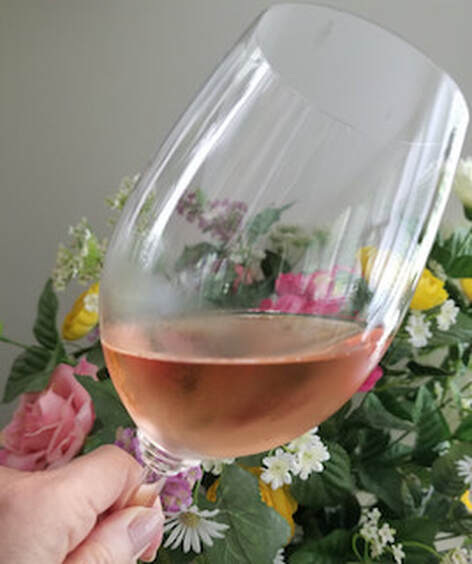
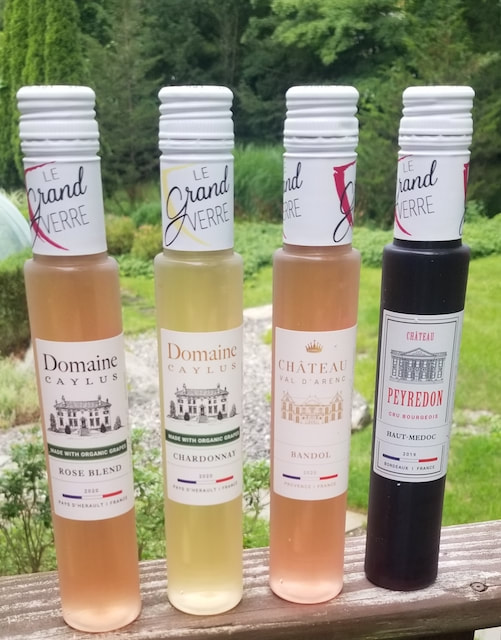
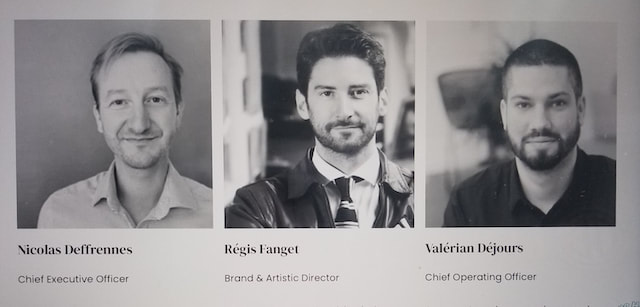
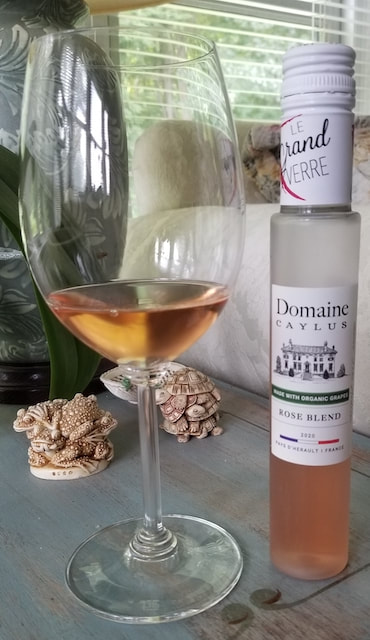
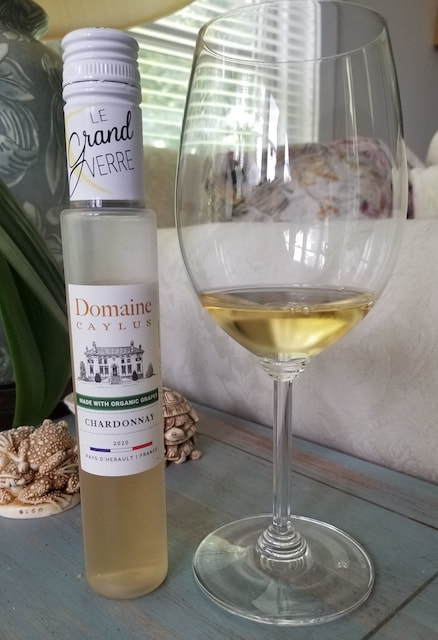
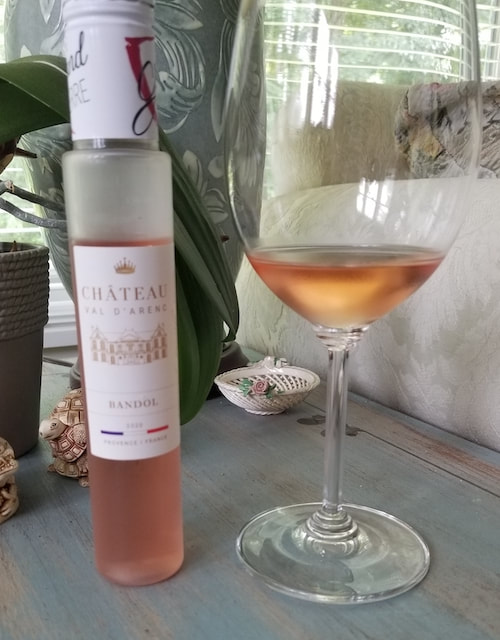
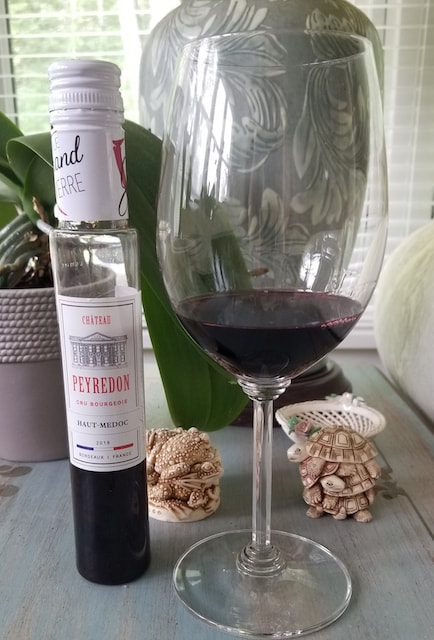
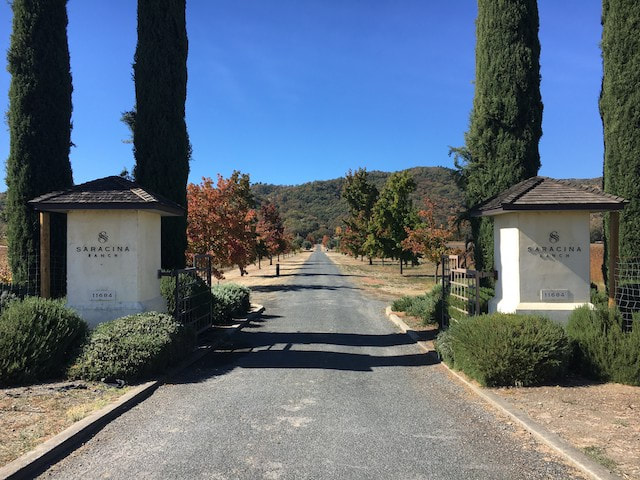
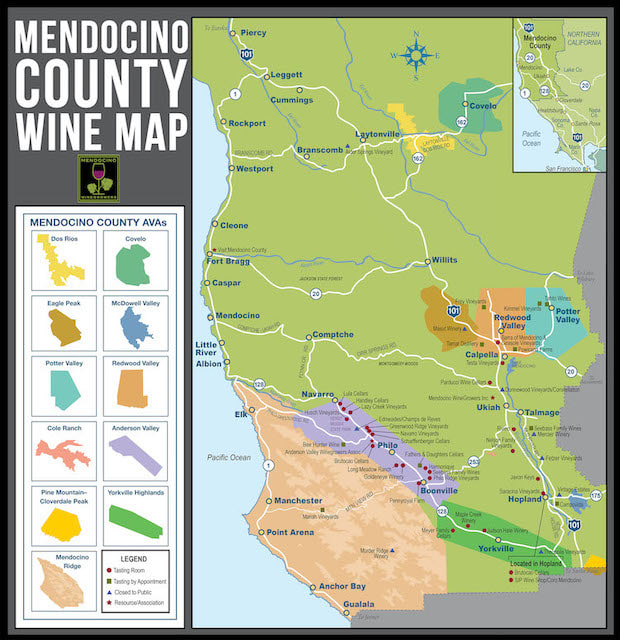
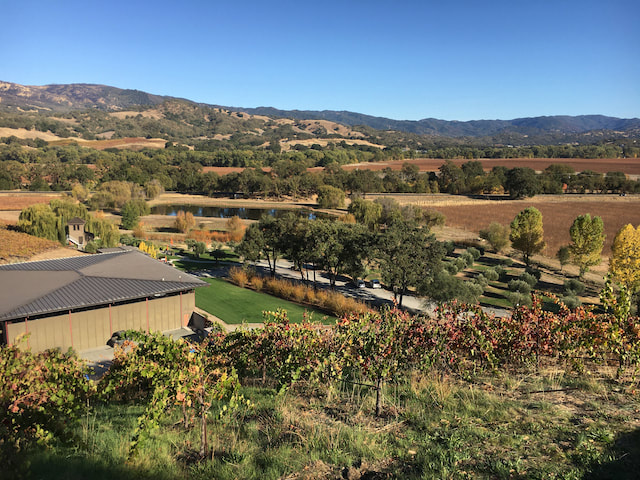
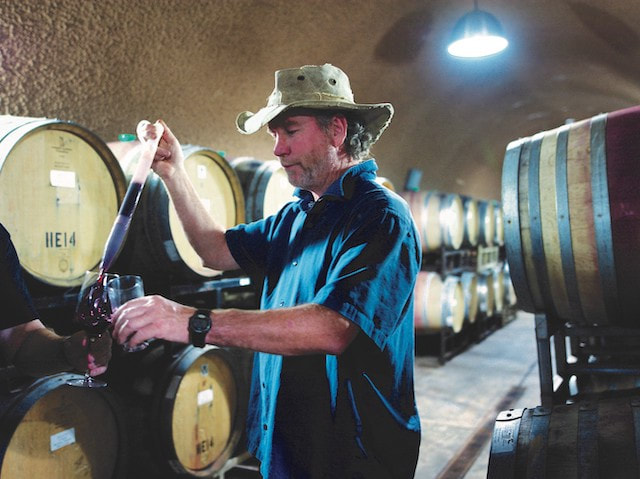
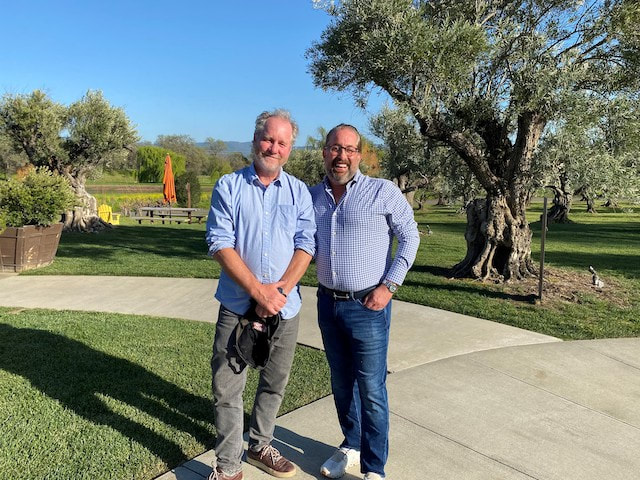
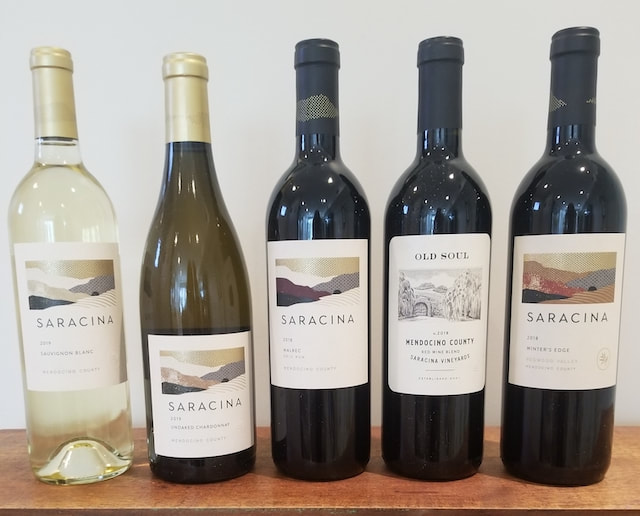
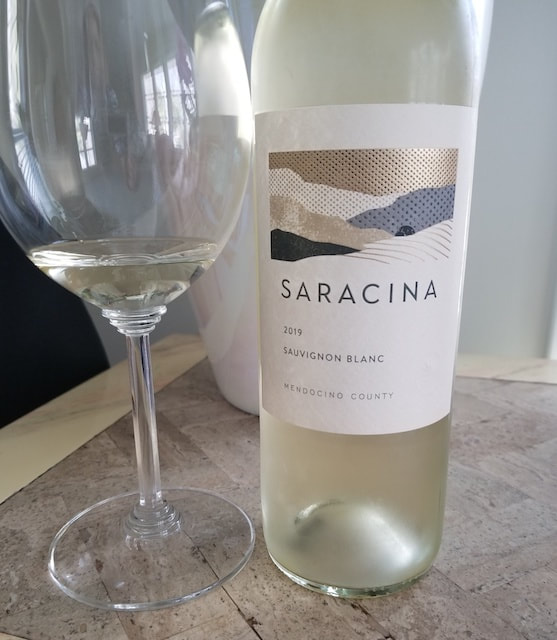
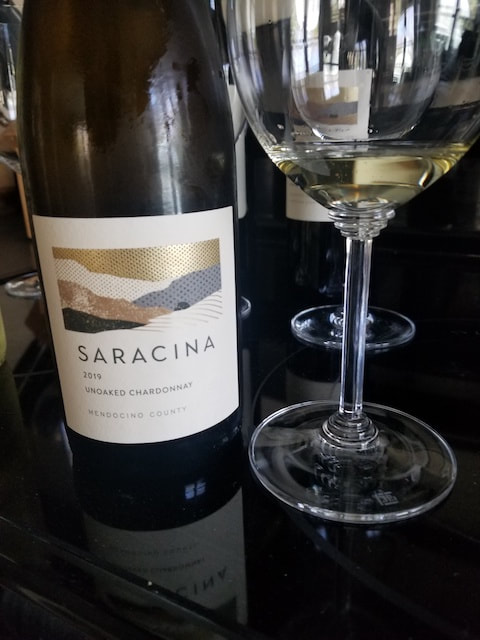
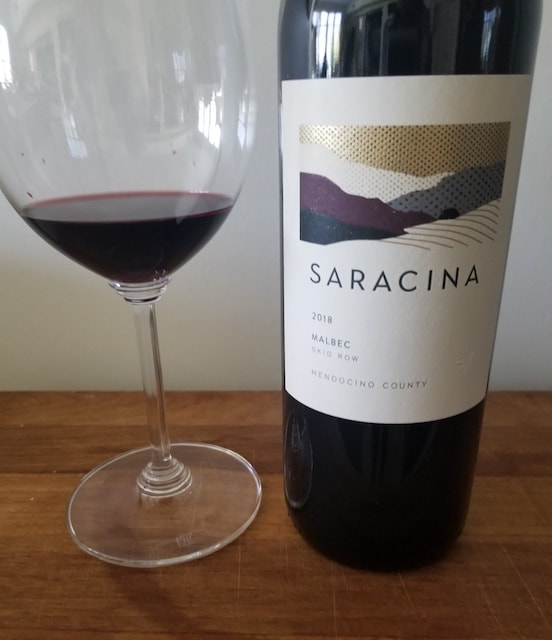
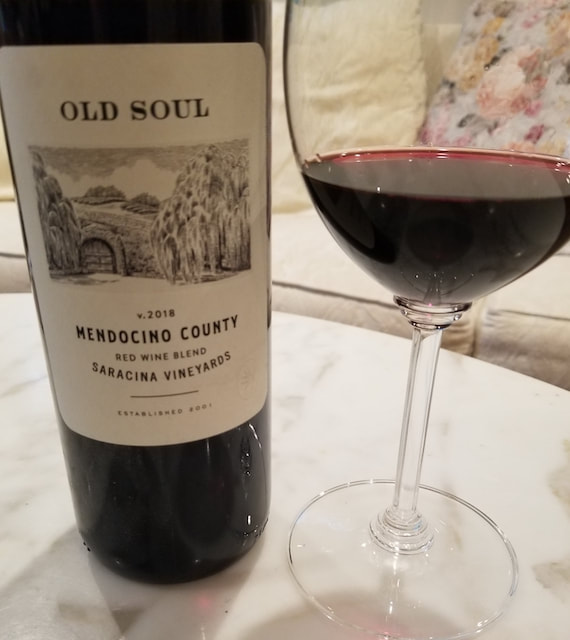
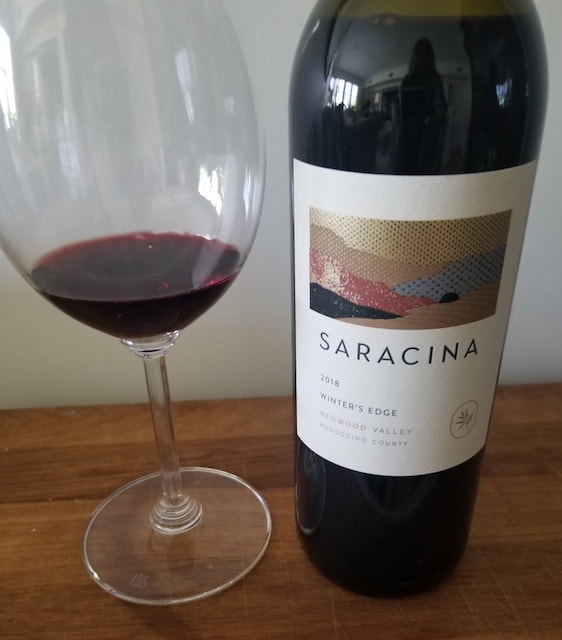

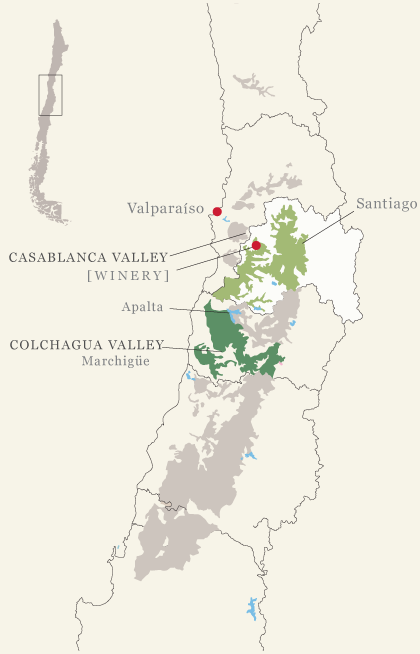

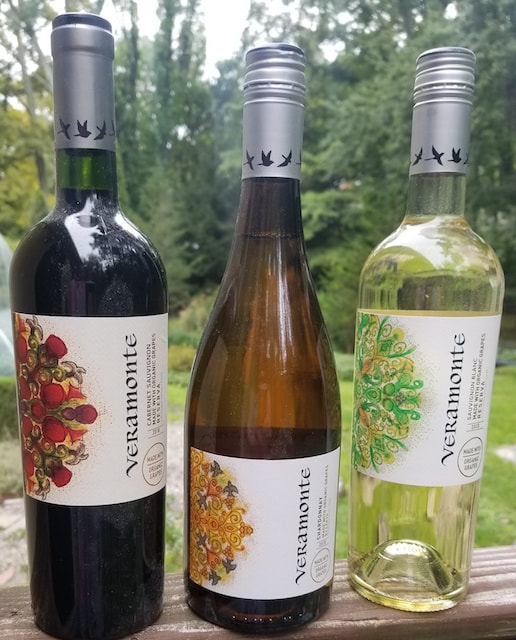
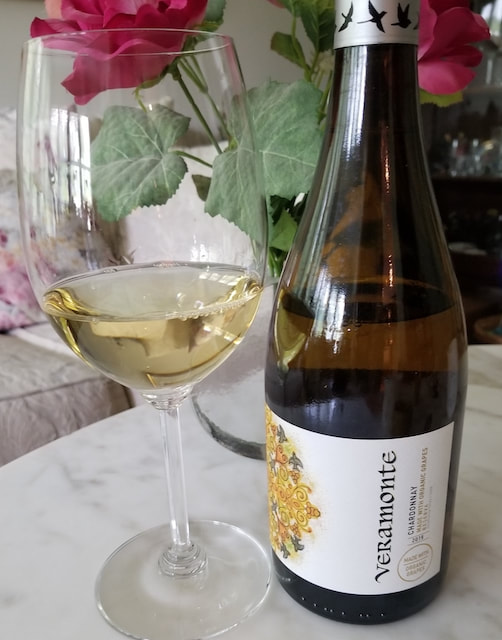
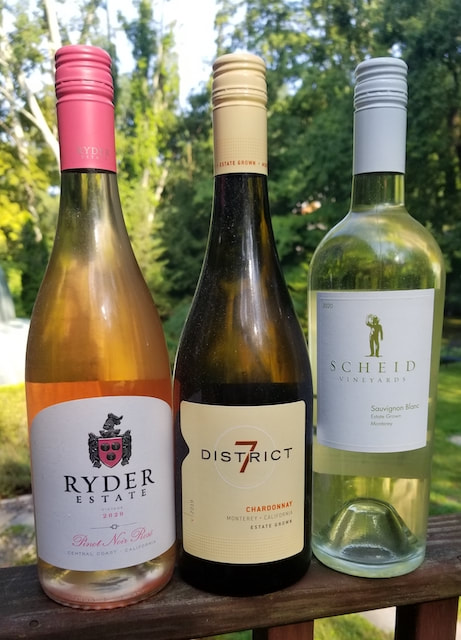
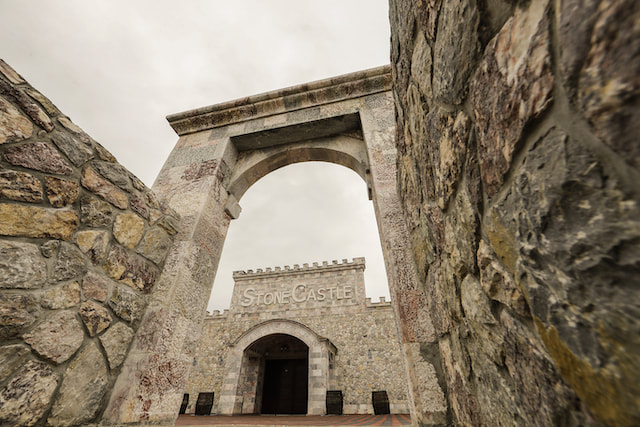
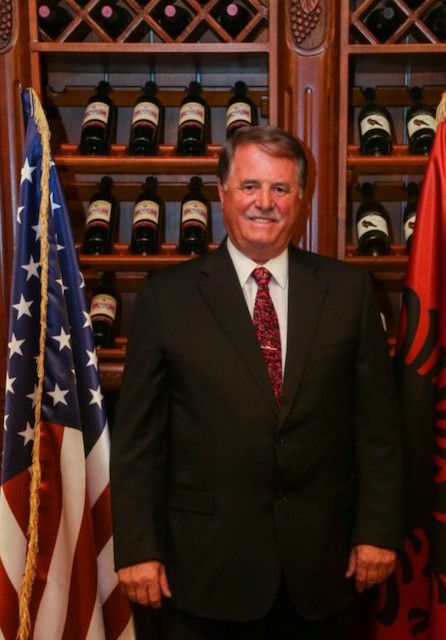
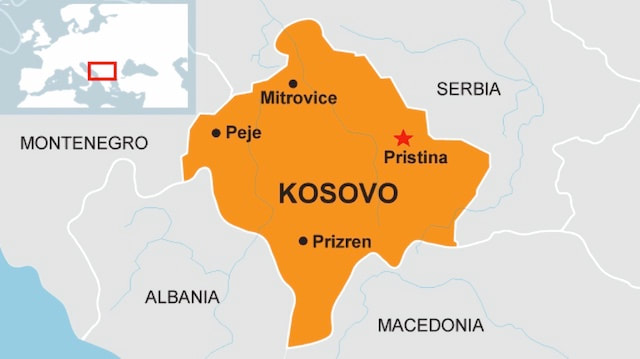
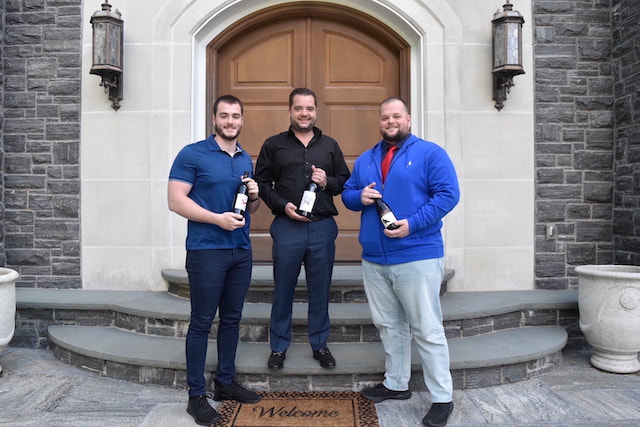
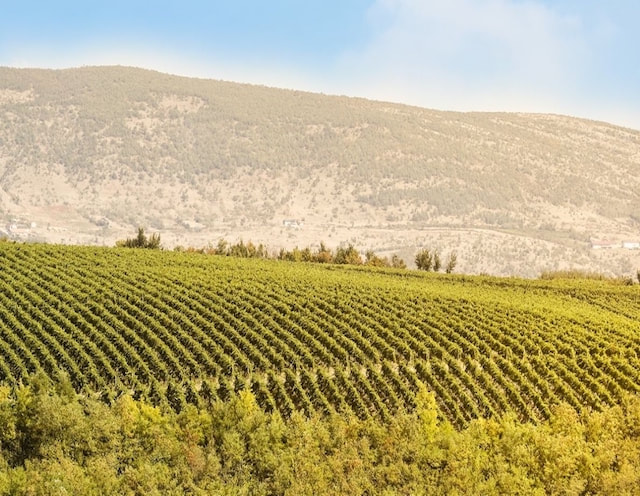
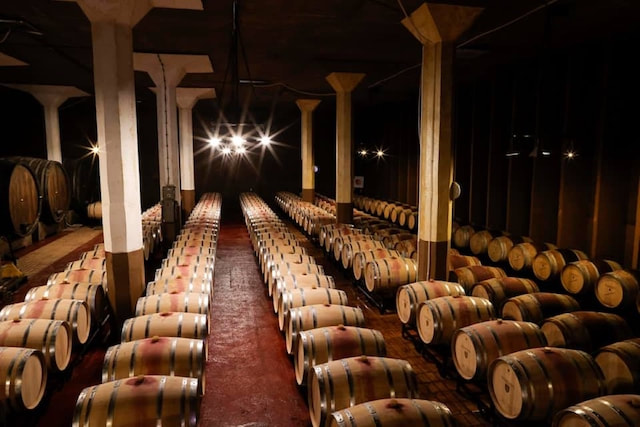

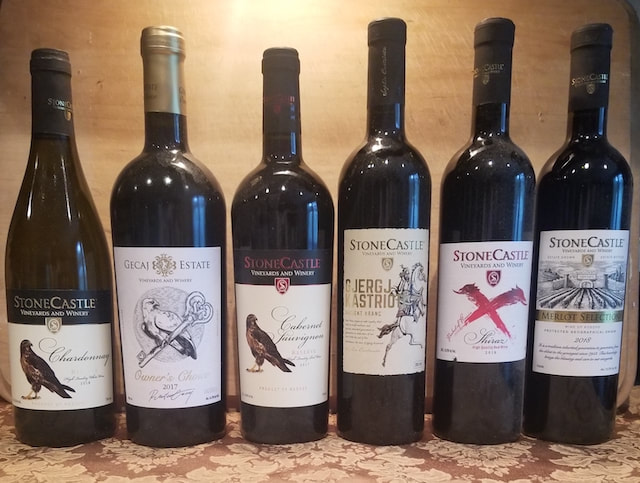
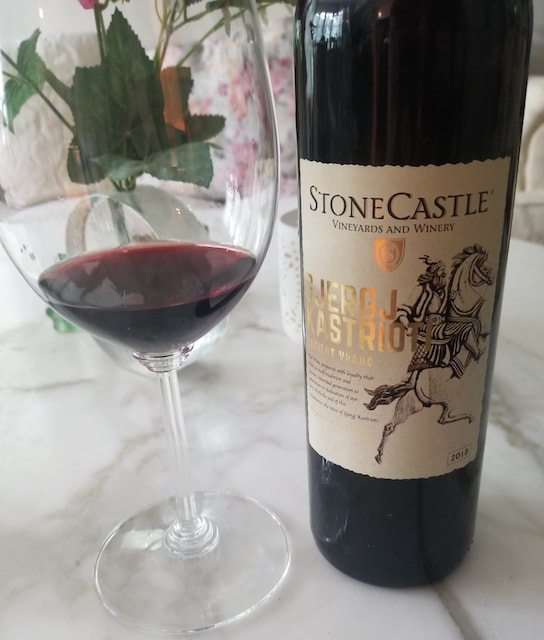
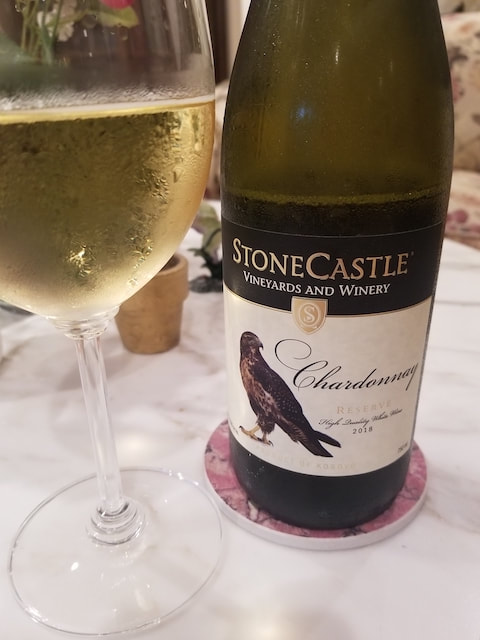
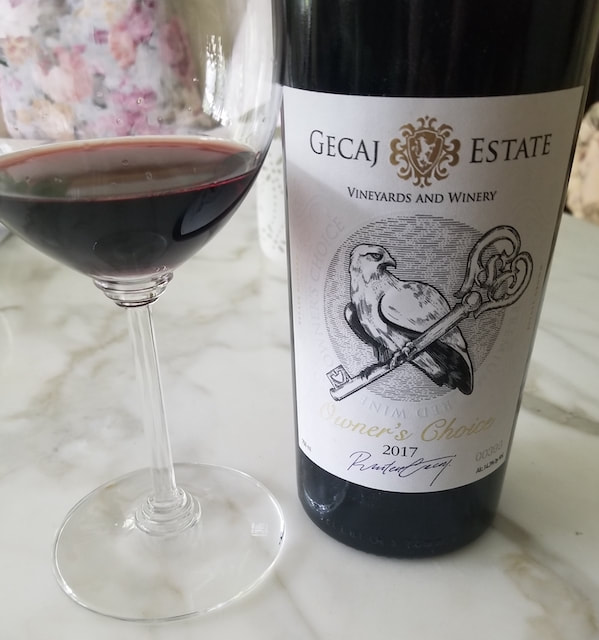
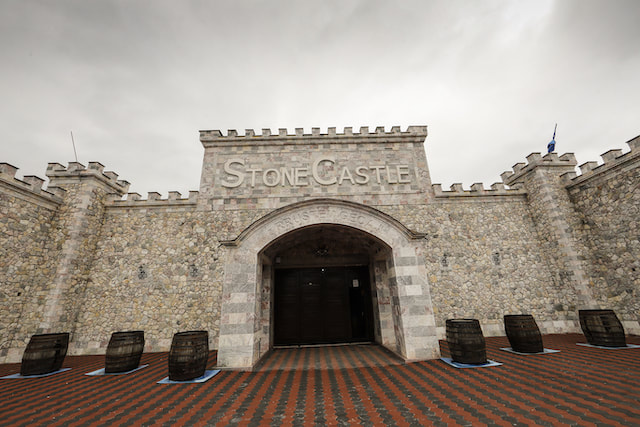

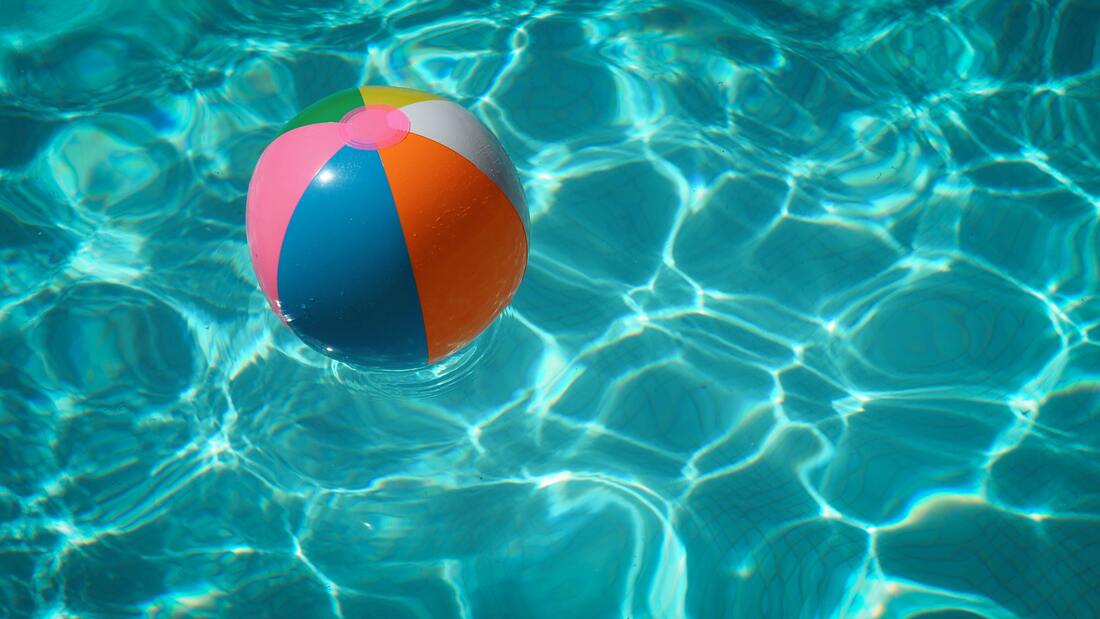
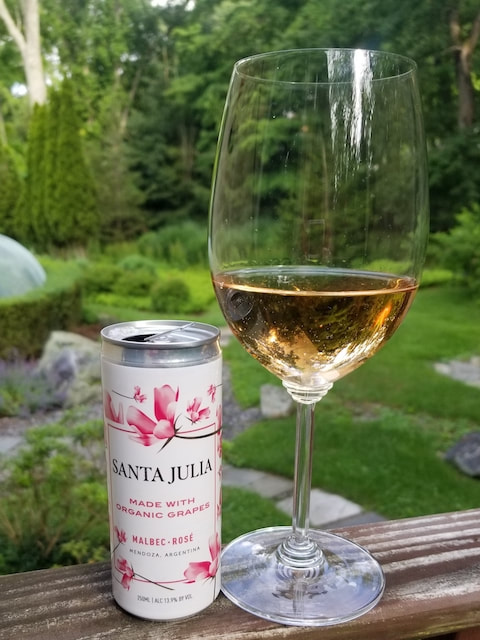
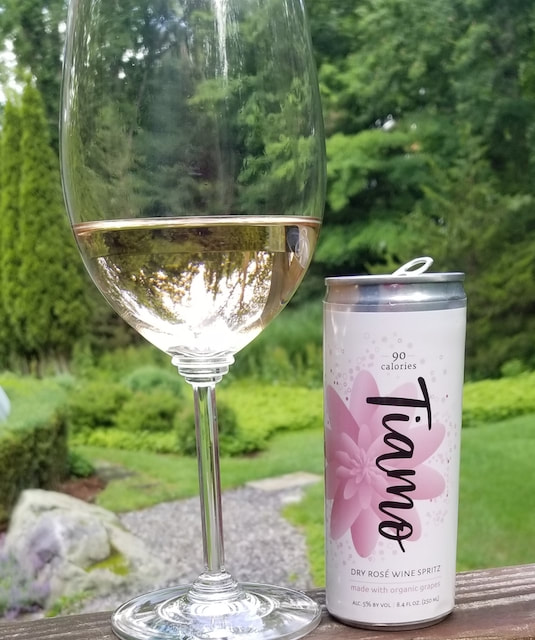
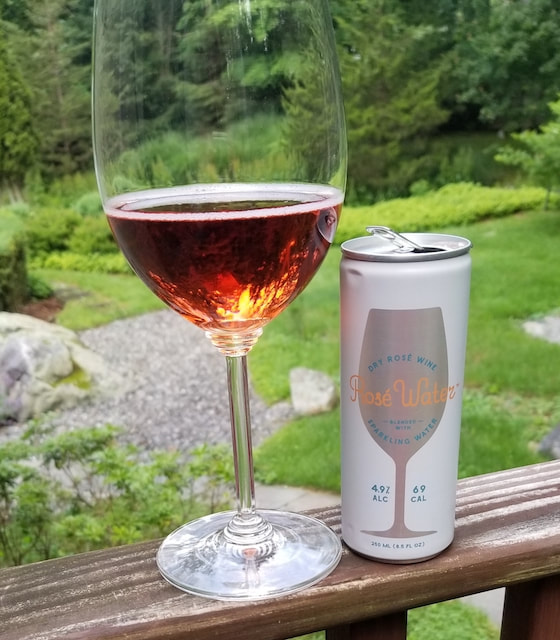
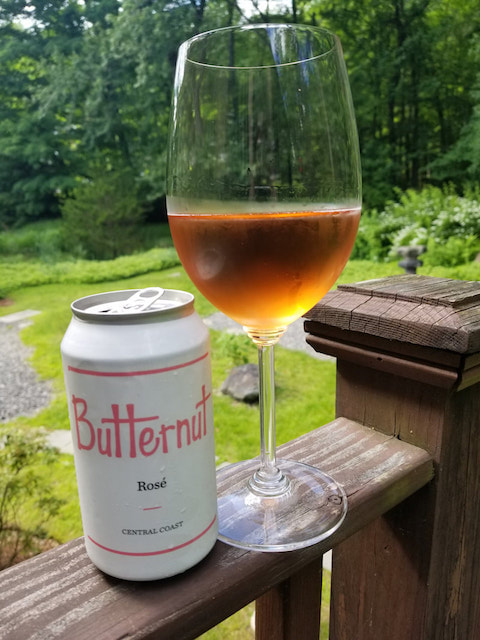
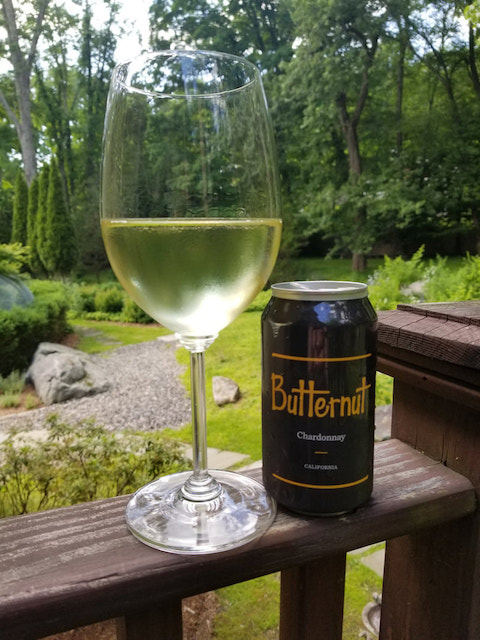
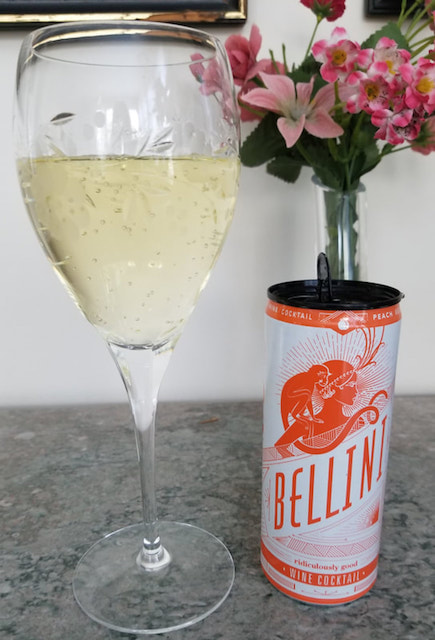
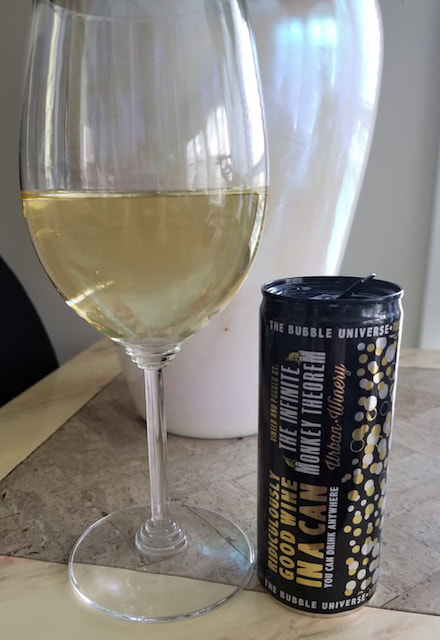
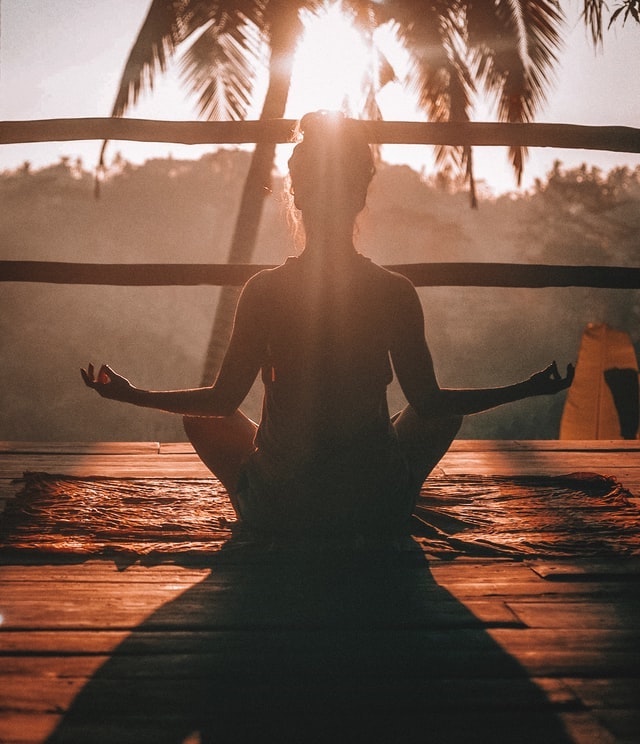
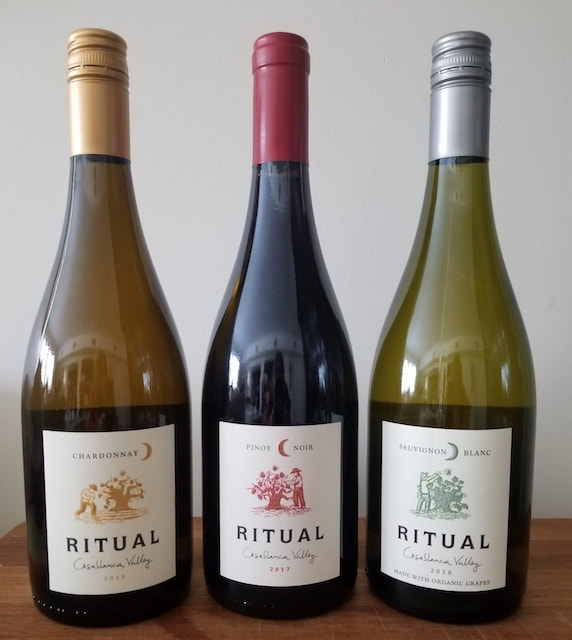
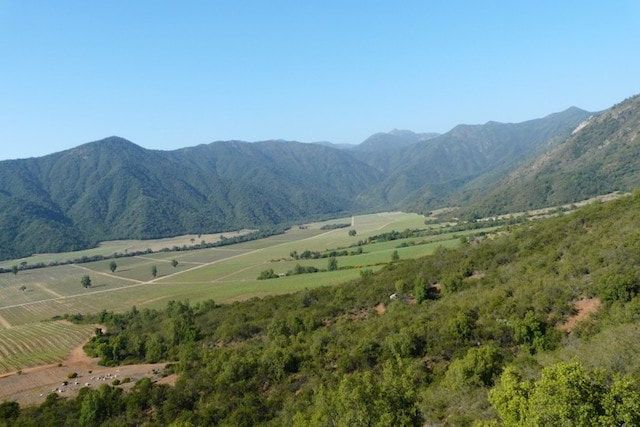
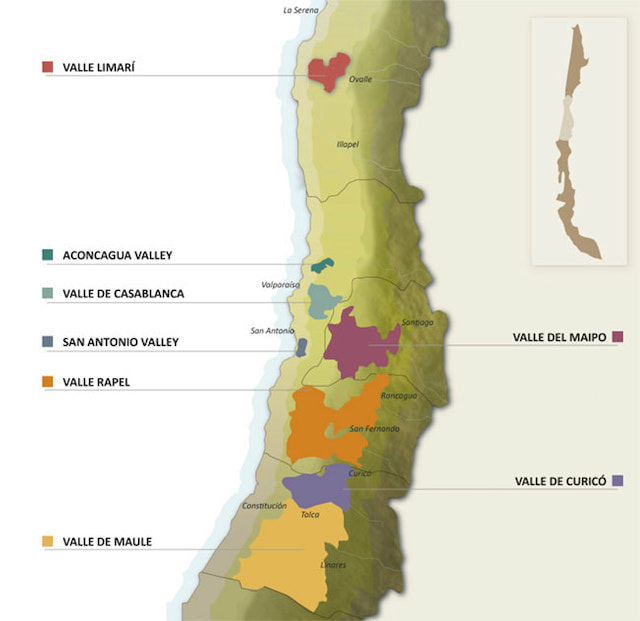
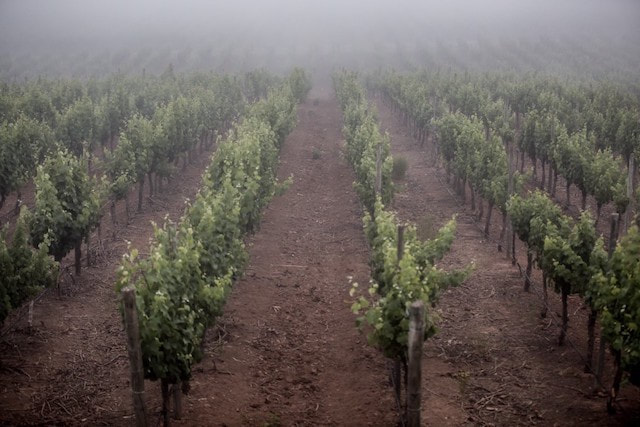
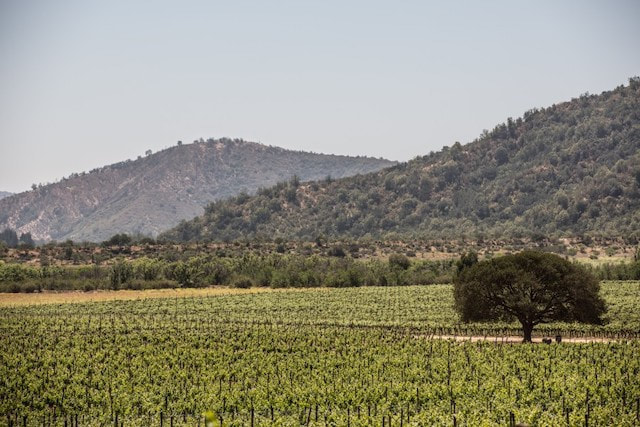
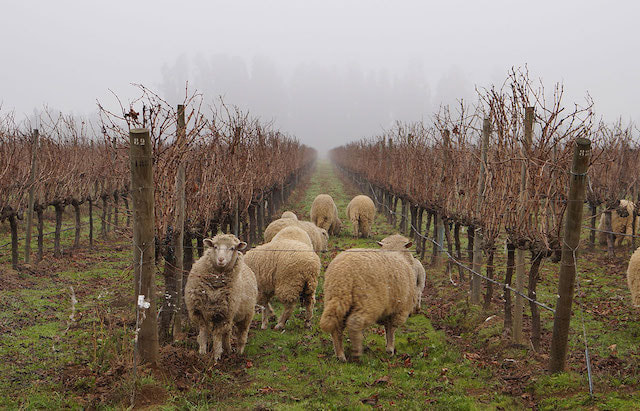

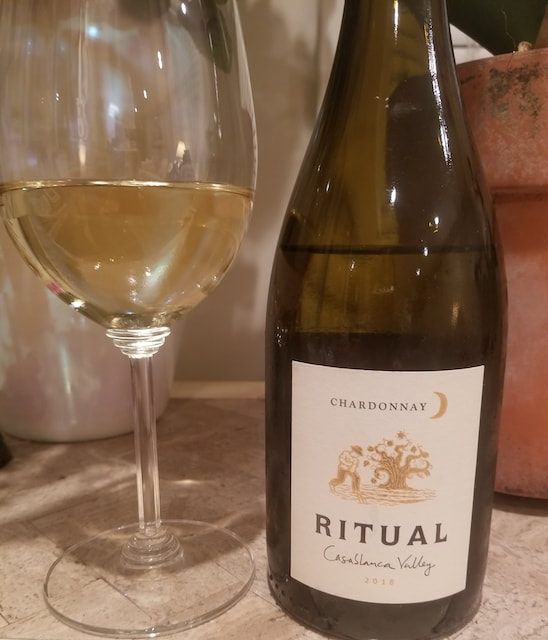
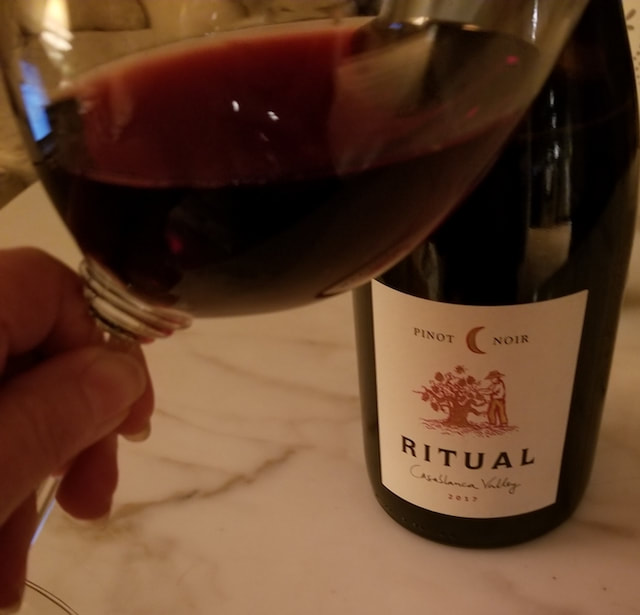
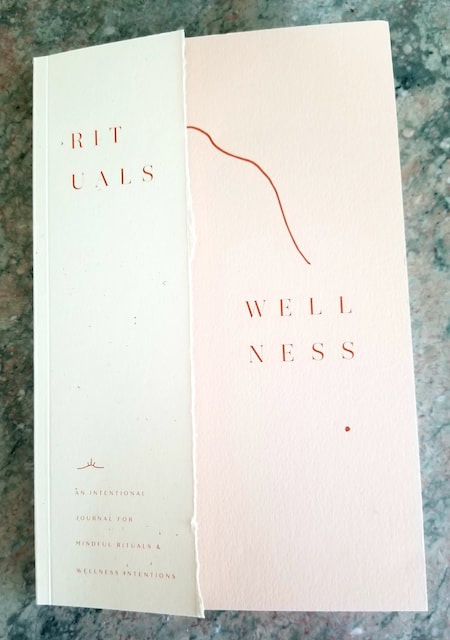
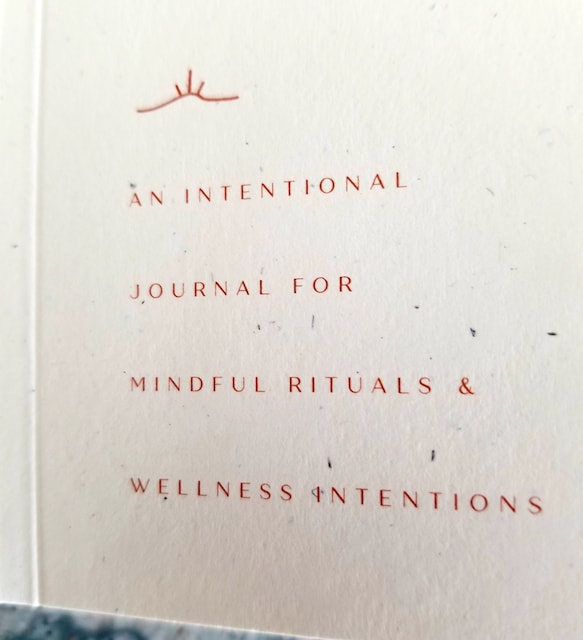
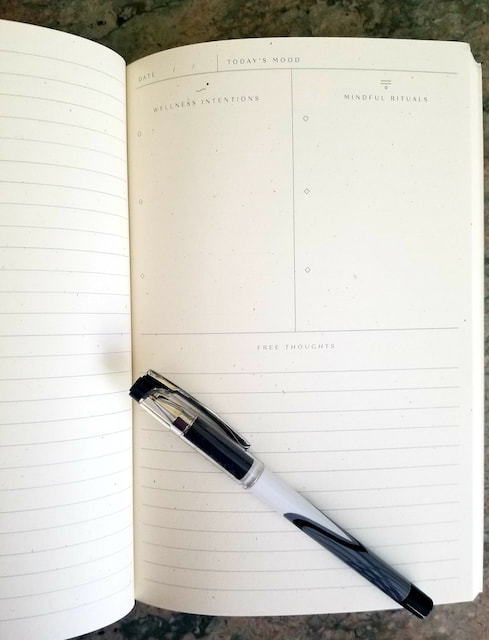
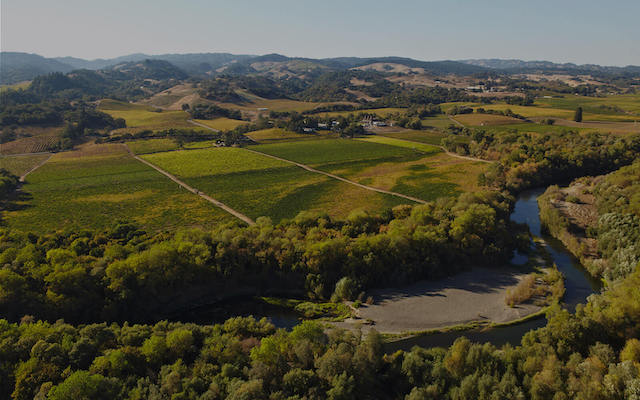
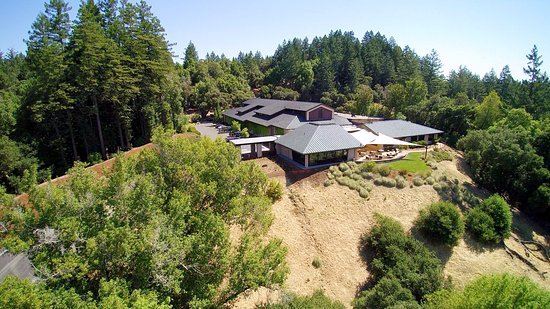
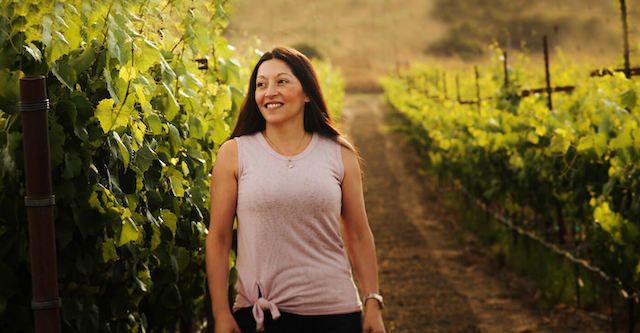
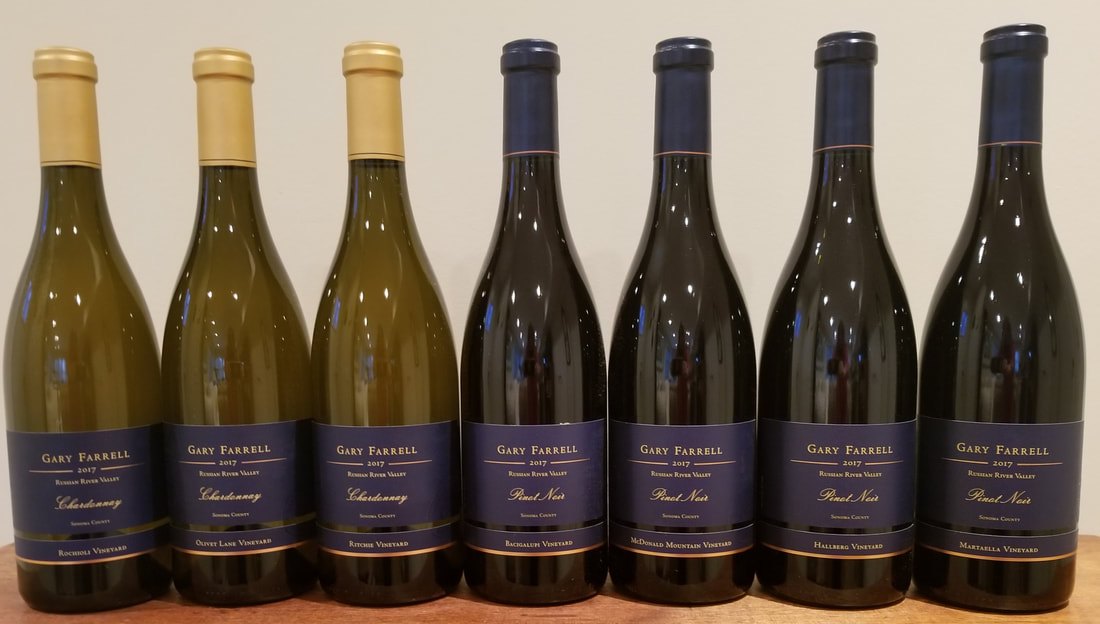
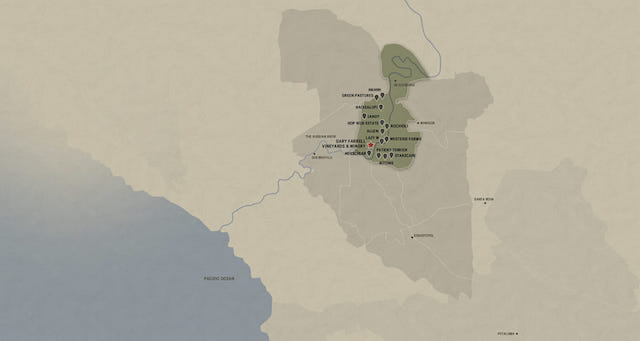
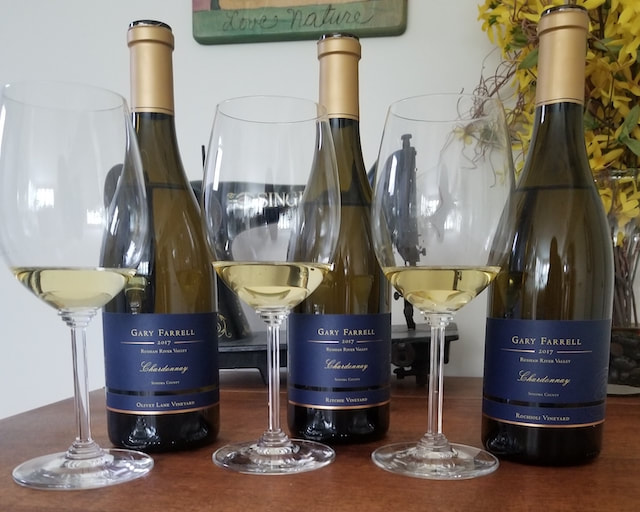
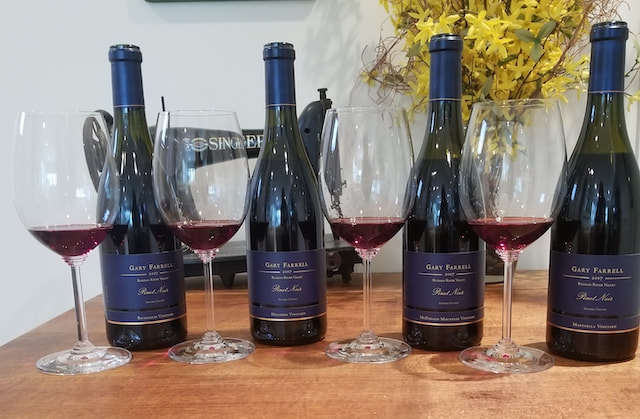
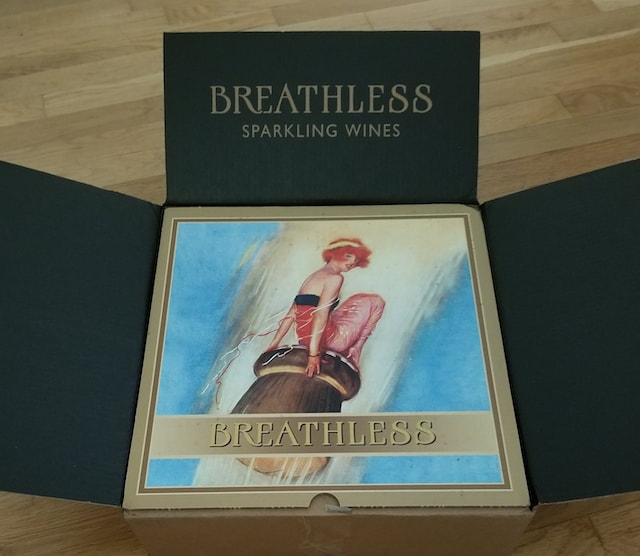
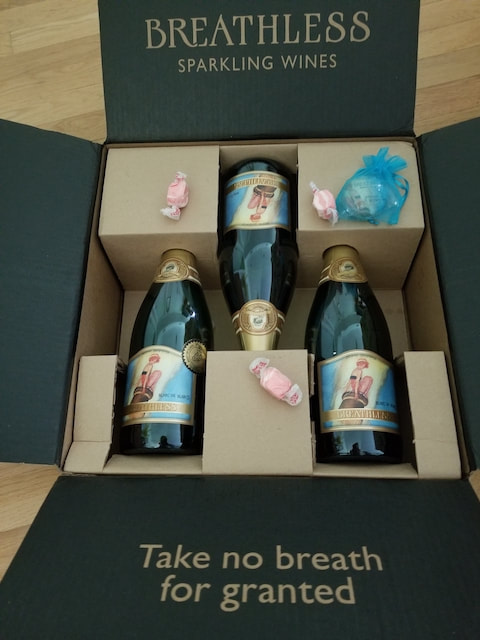
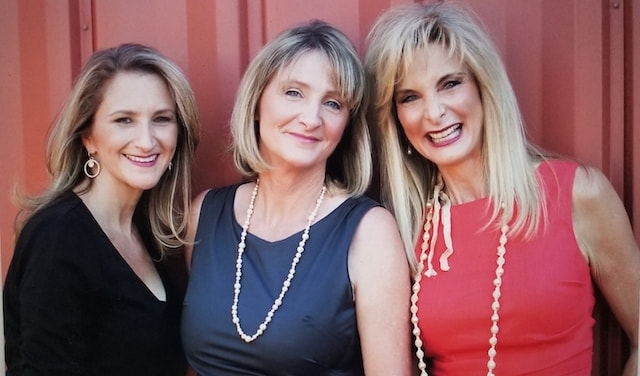
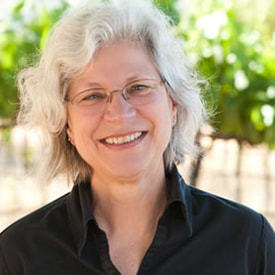
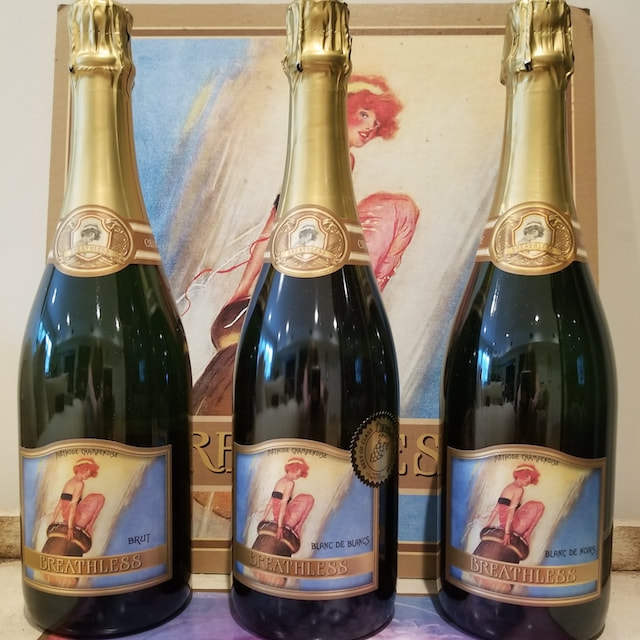
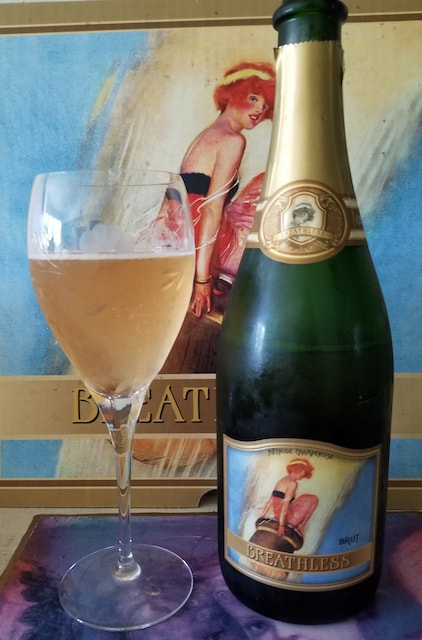
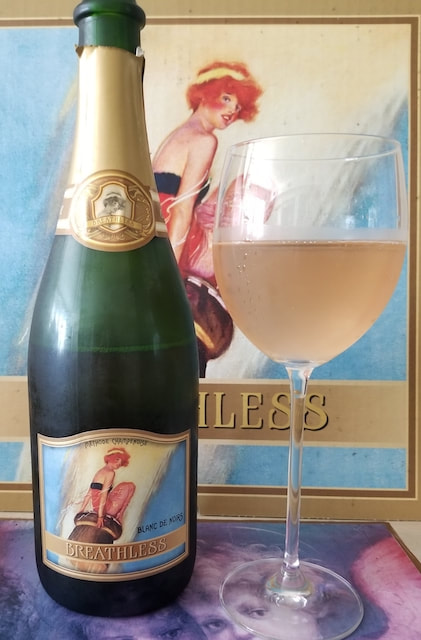
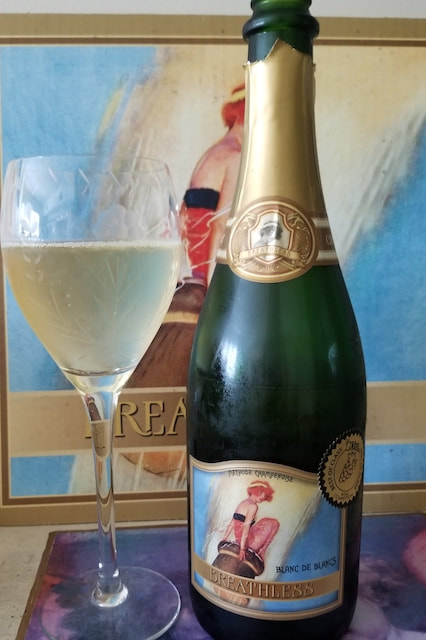
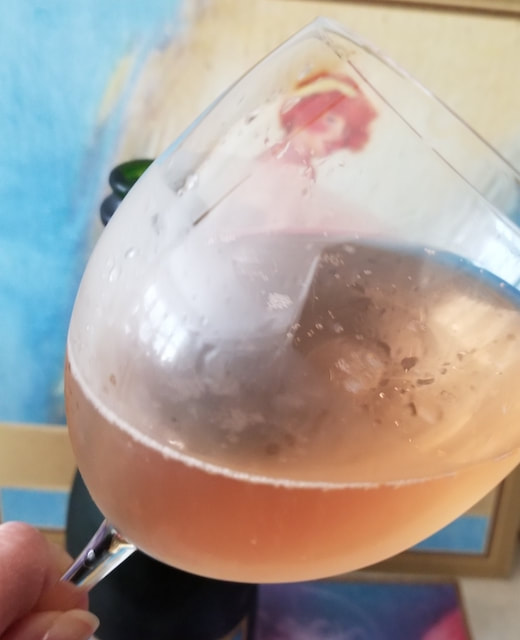
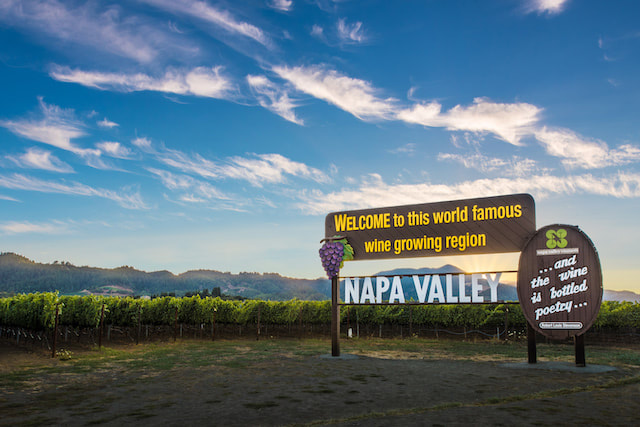
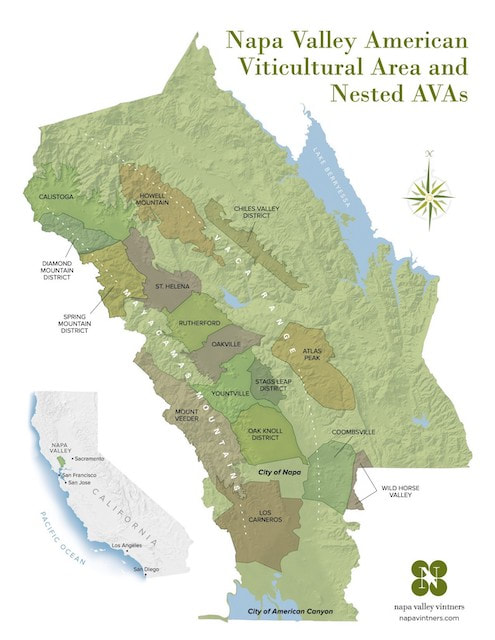
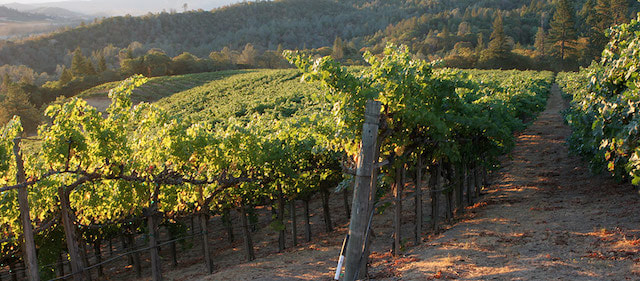
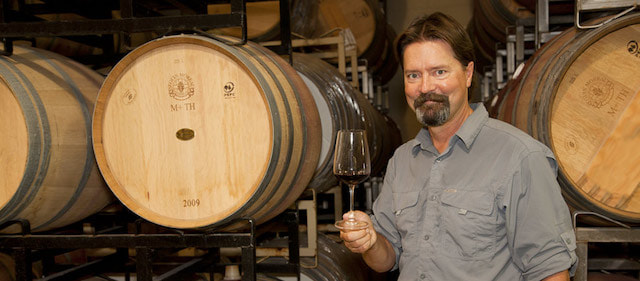
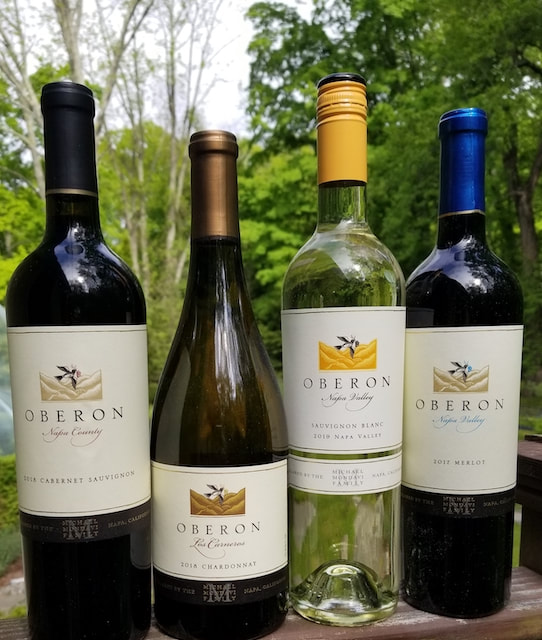
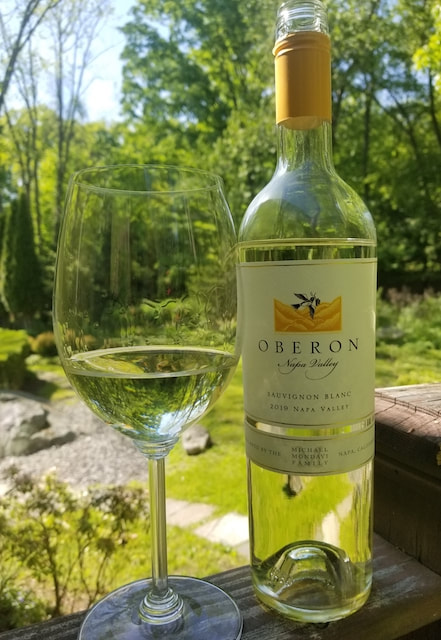
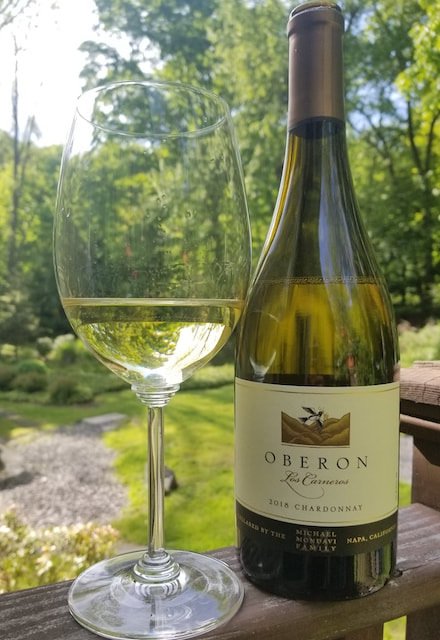
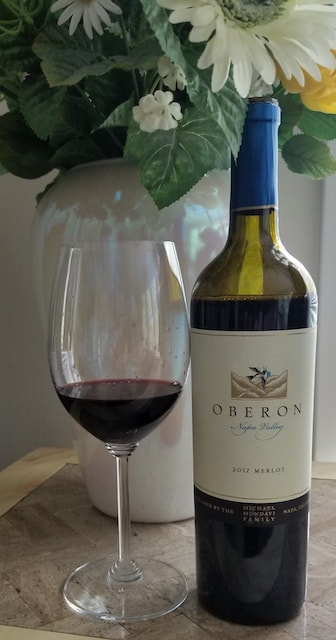

 RSS Feed
RSS Feed